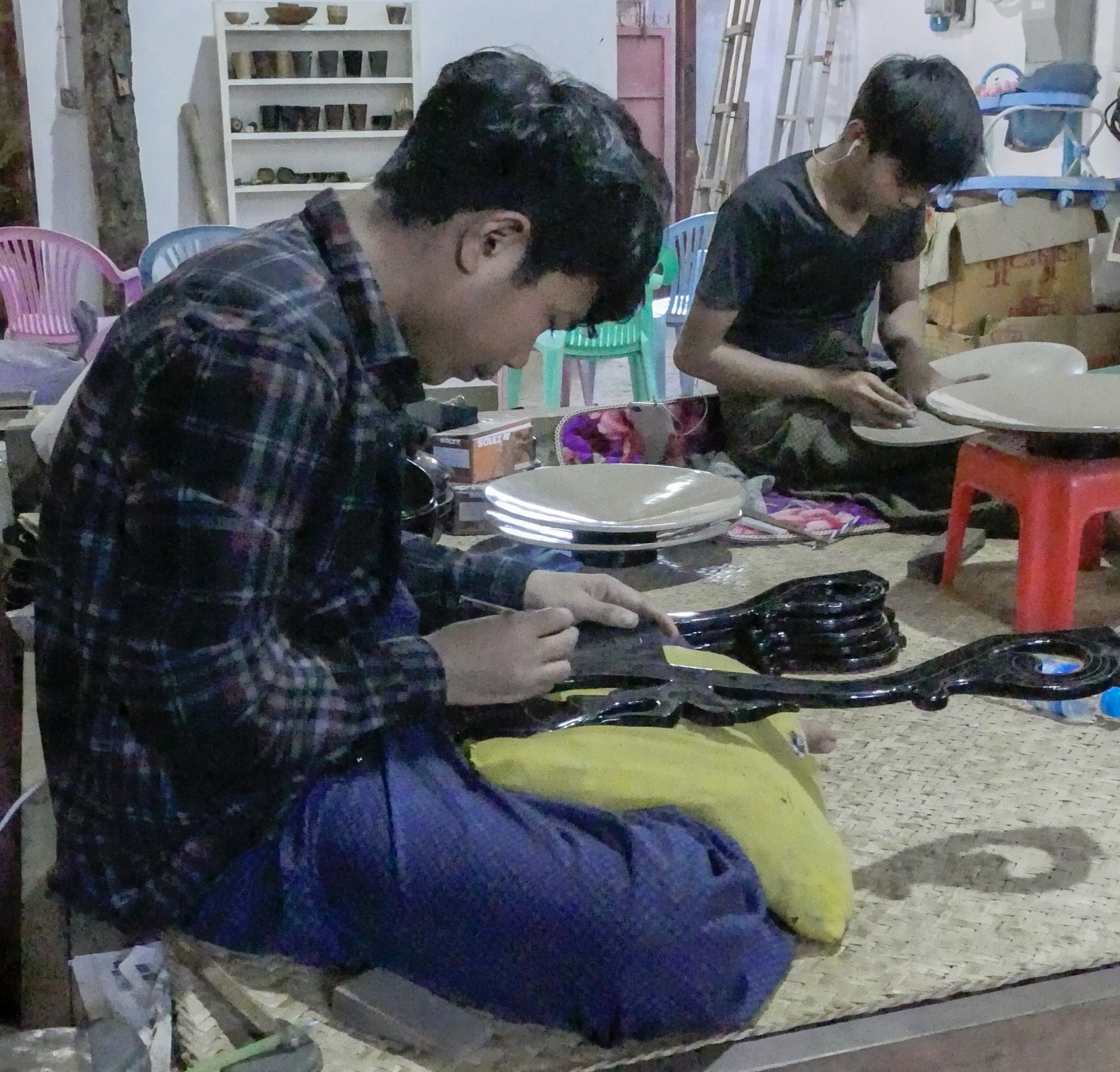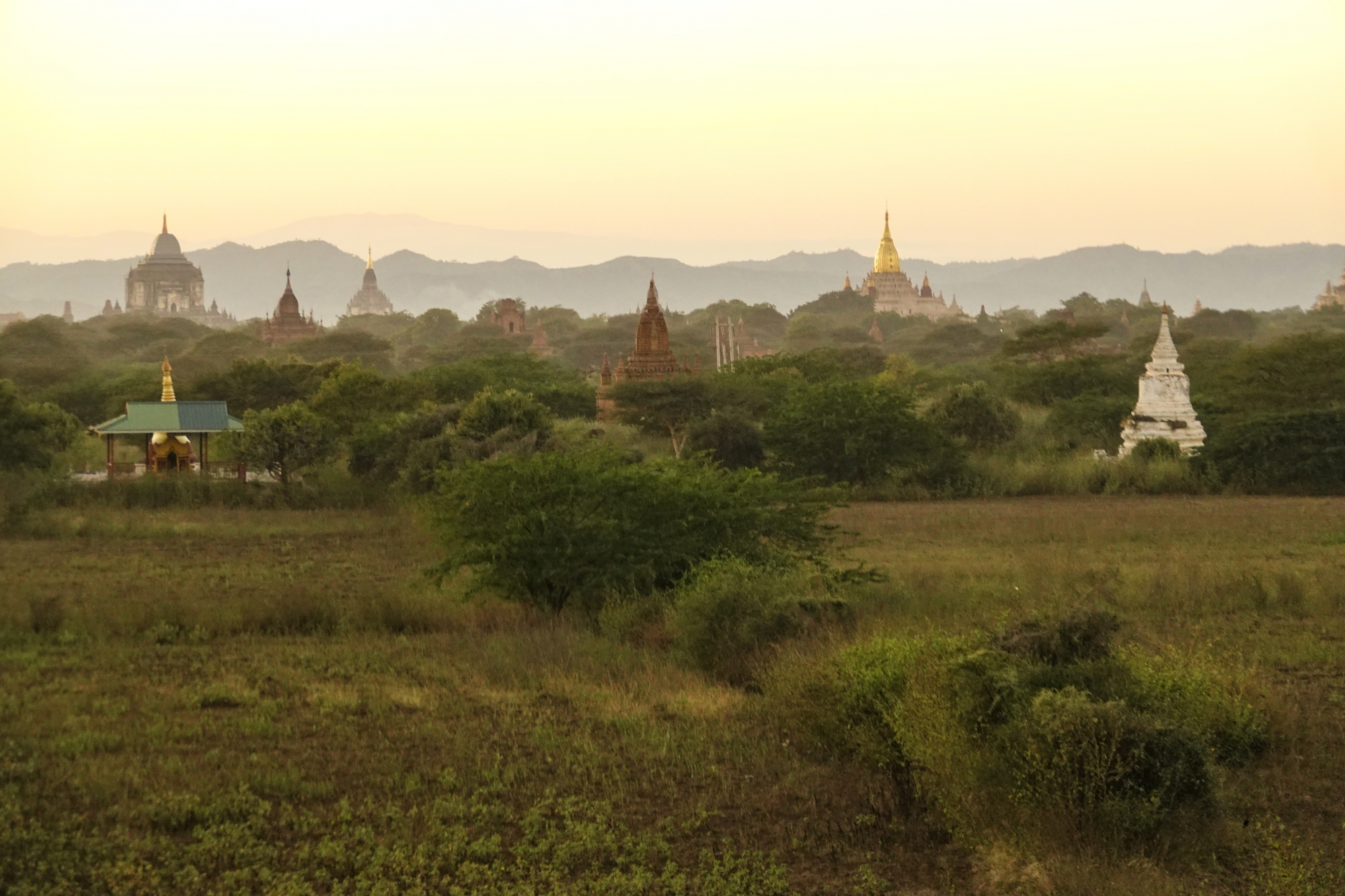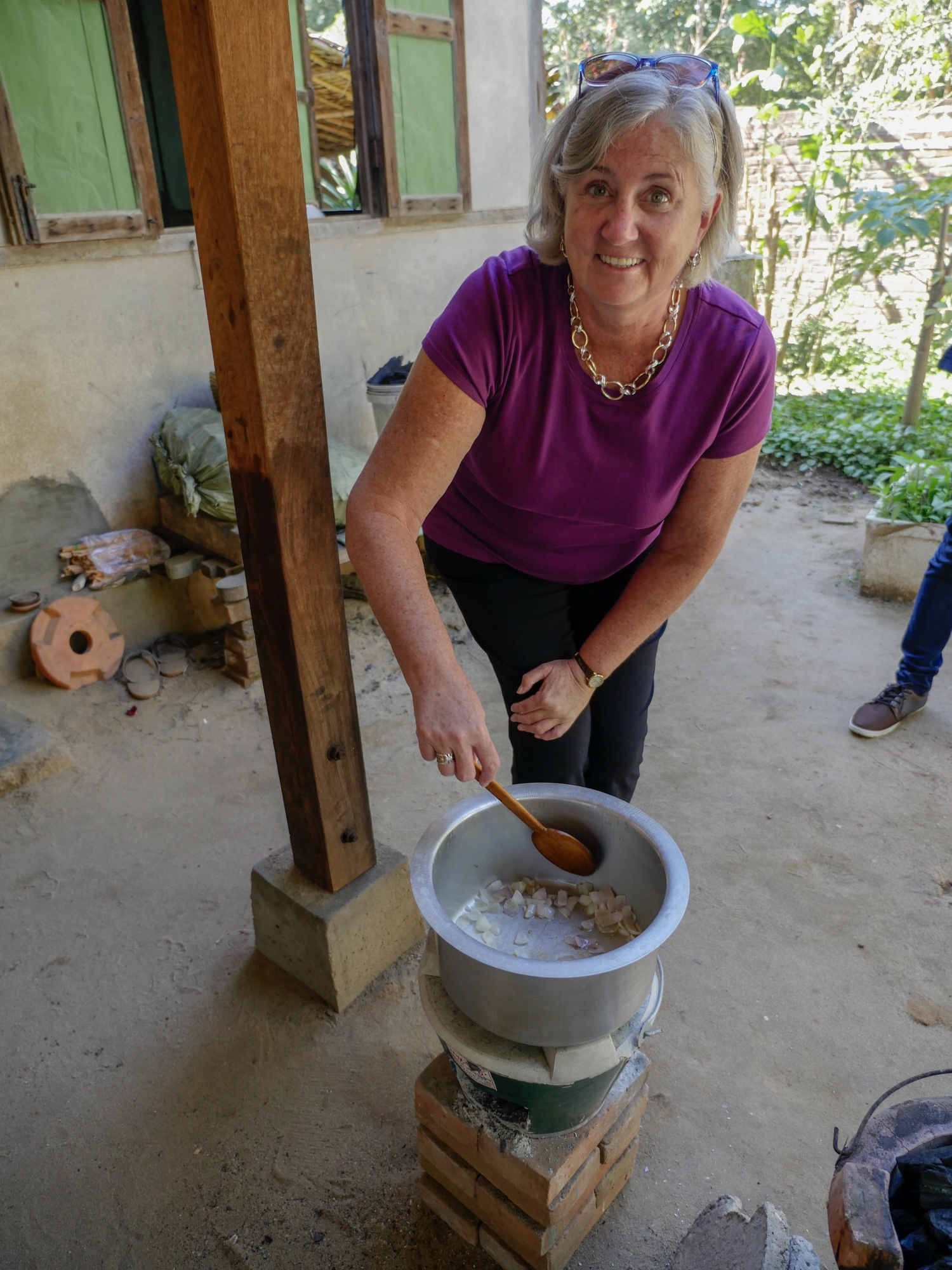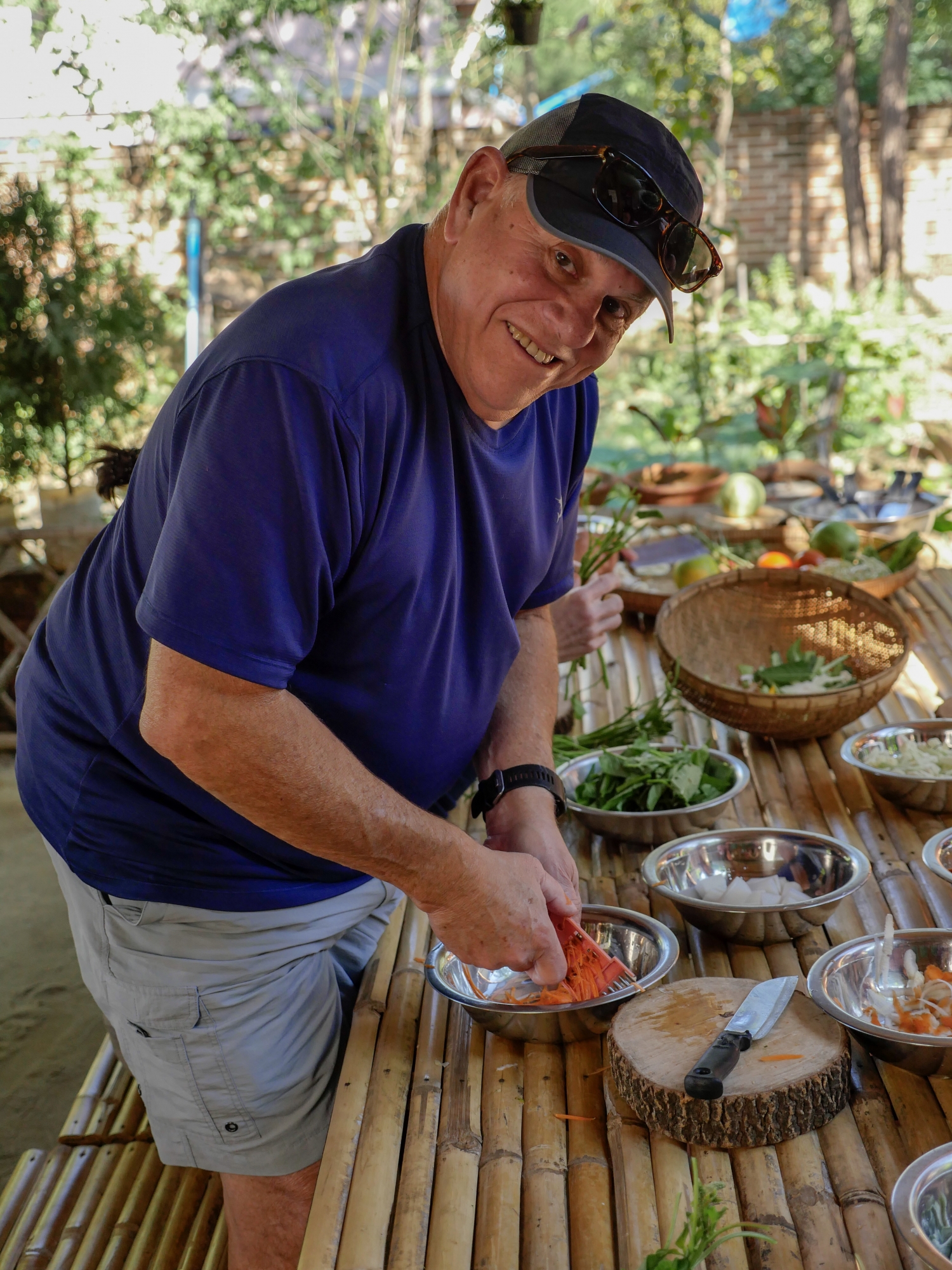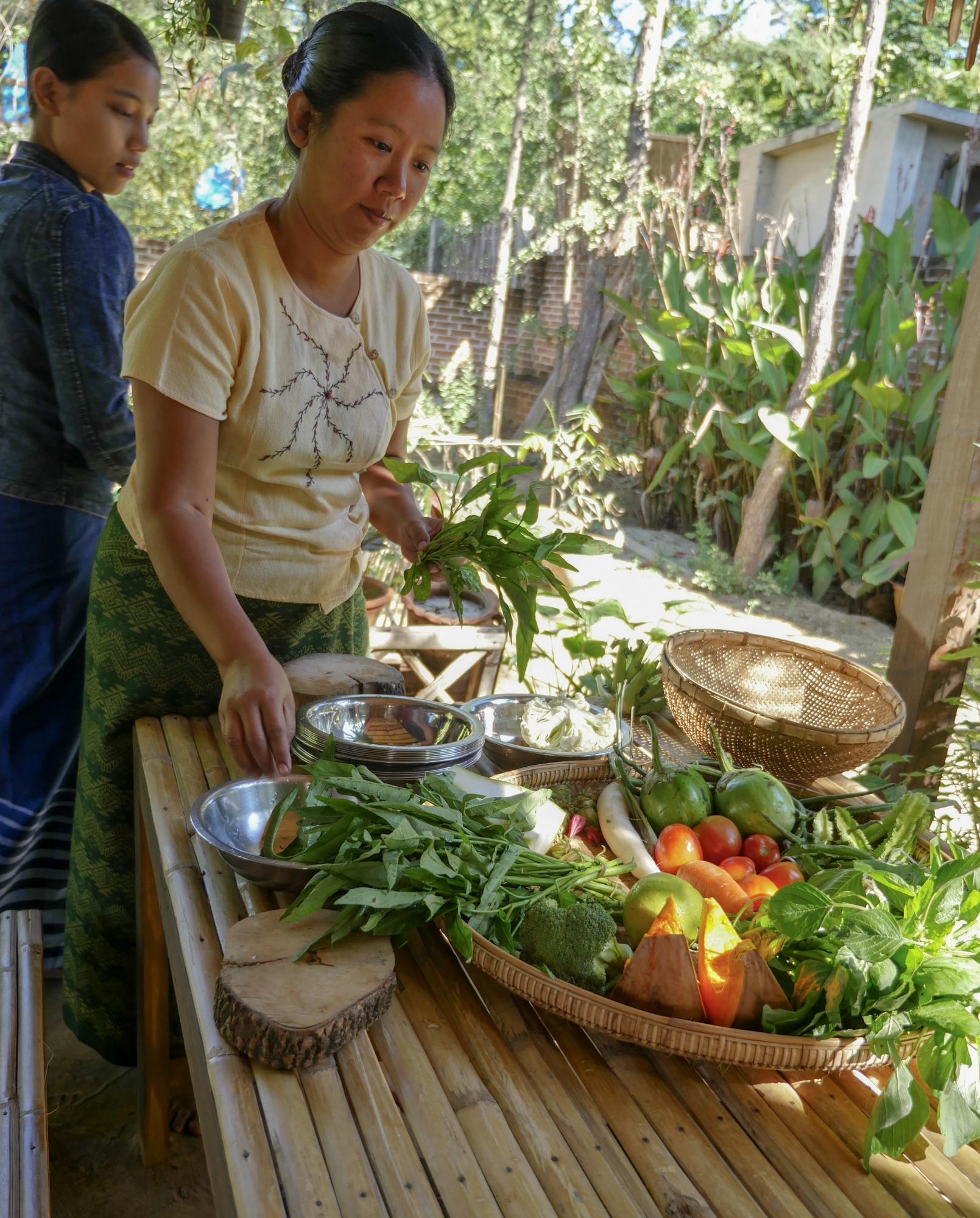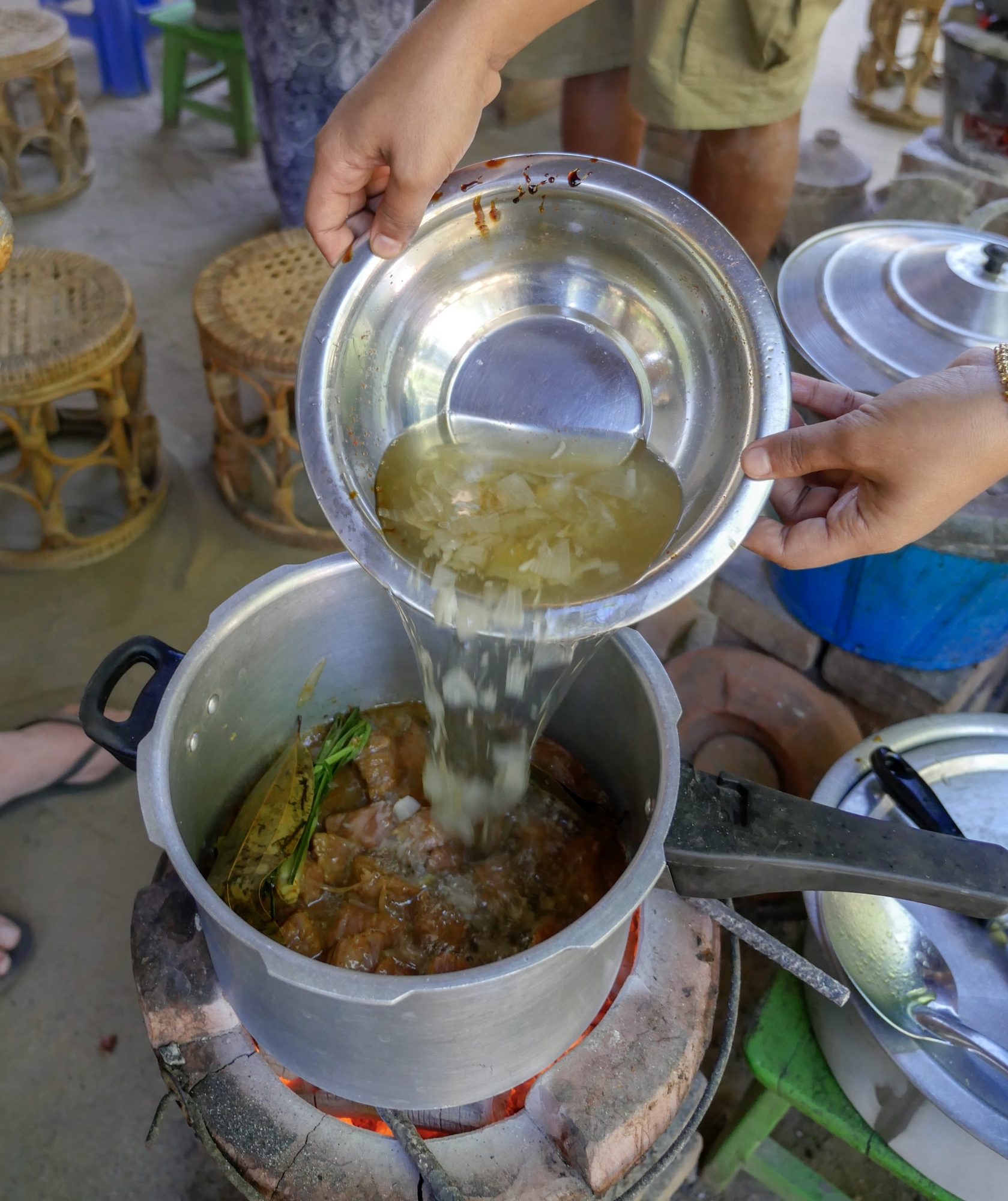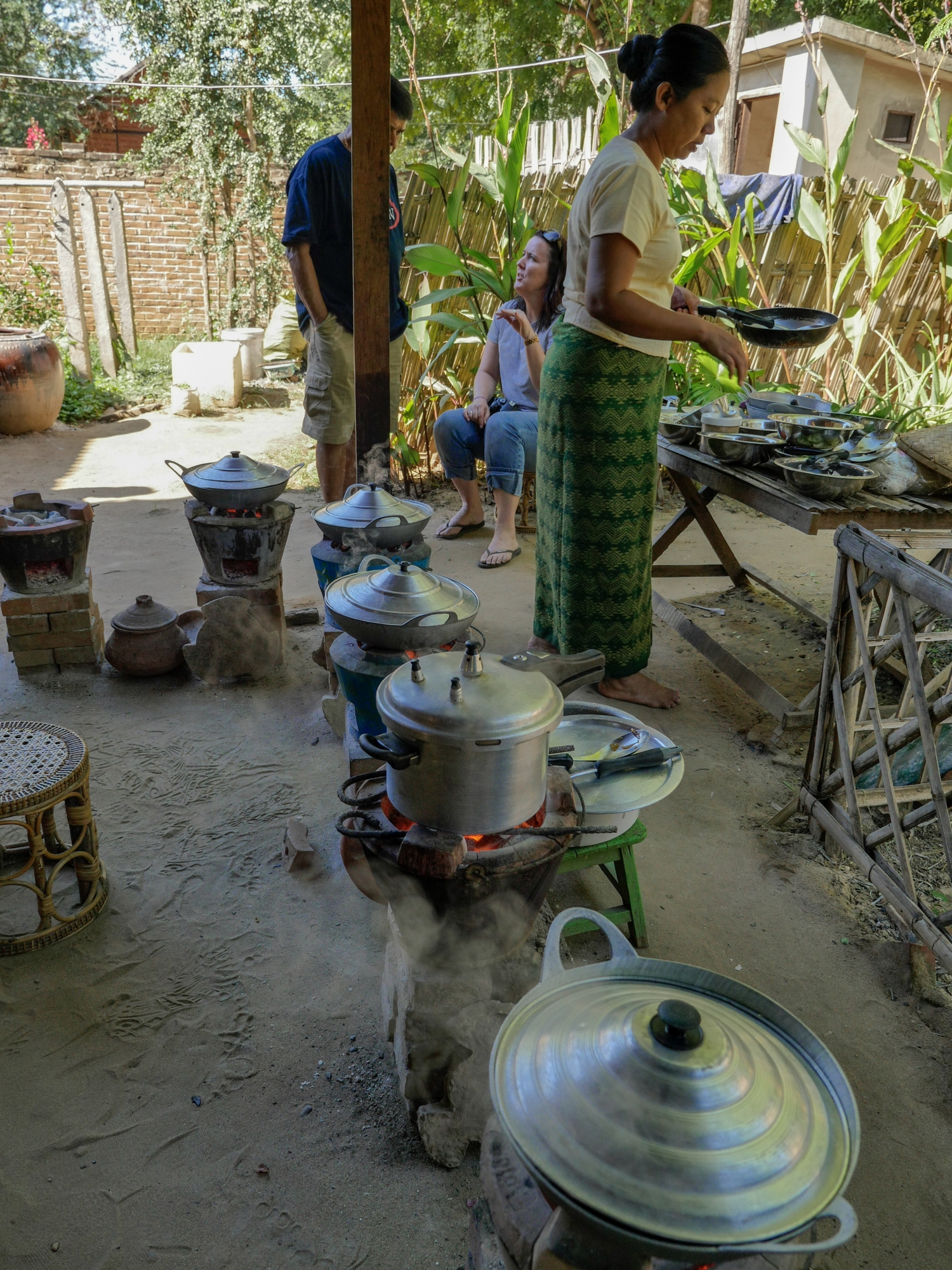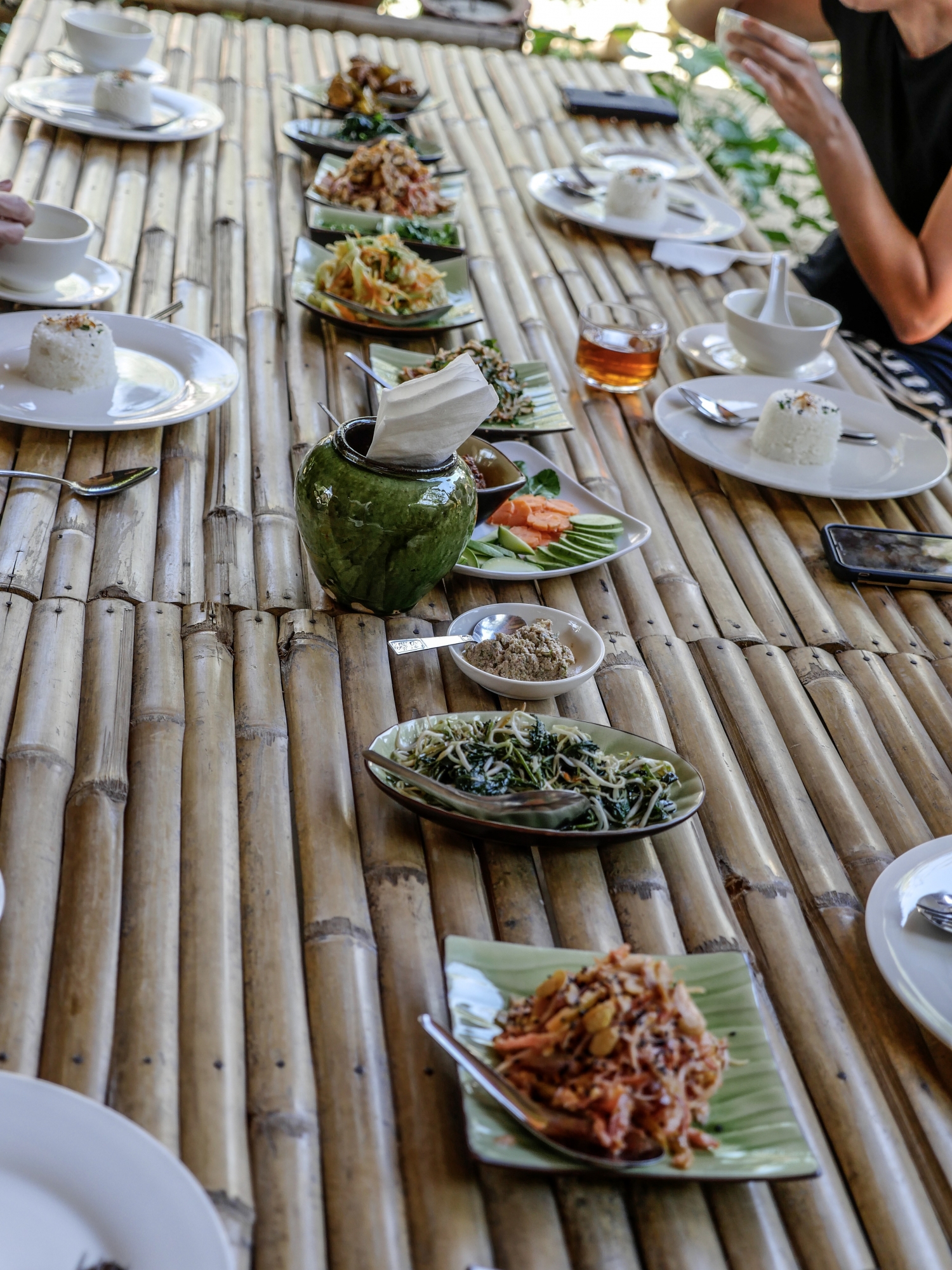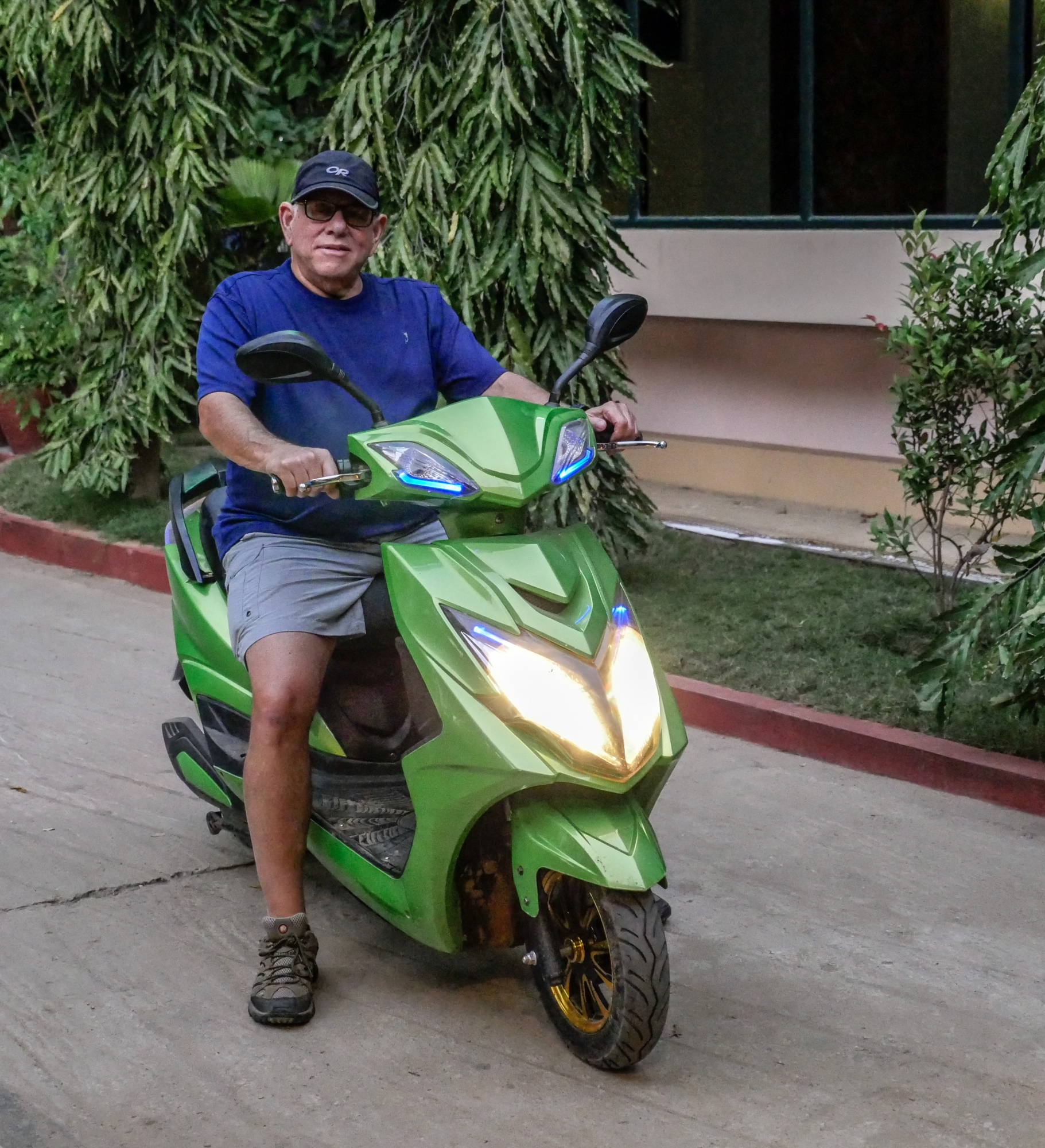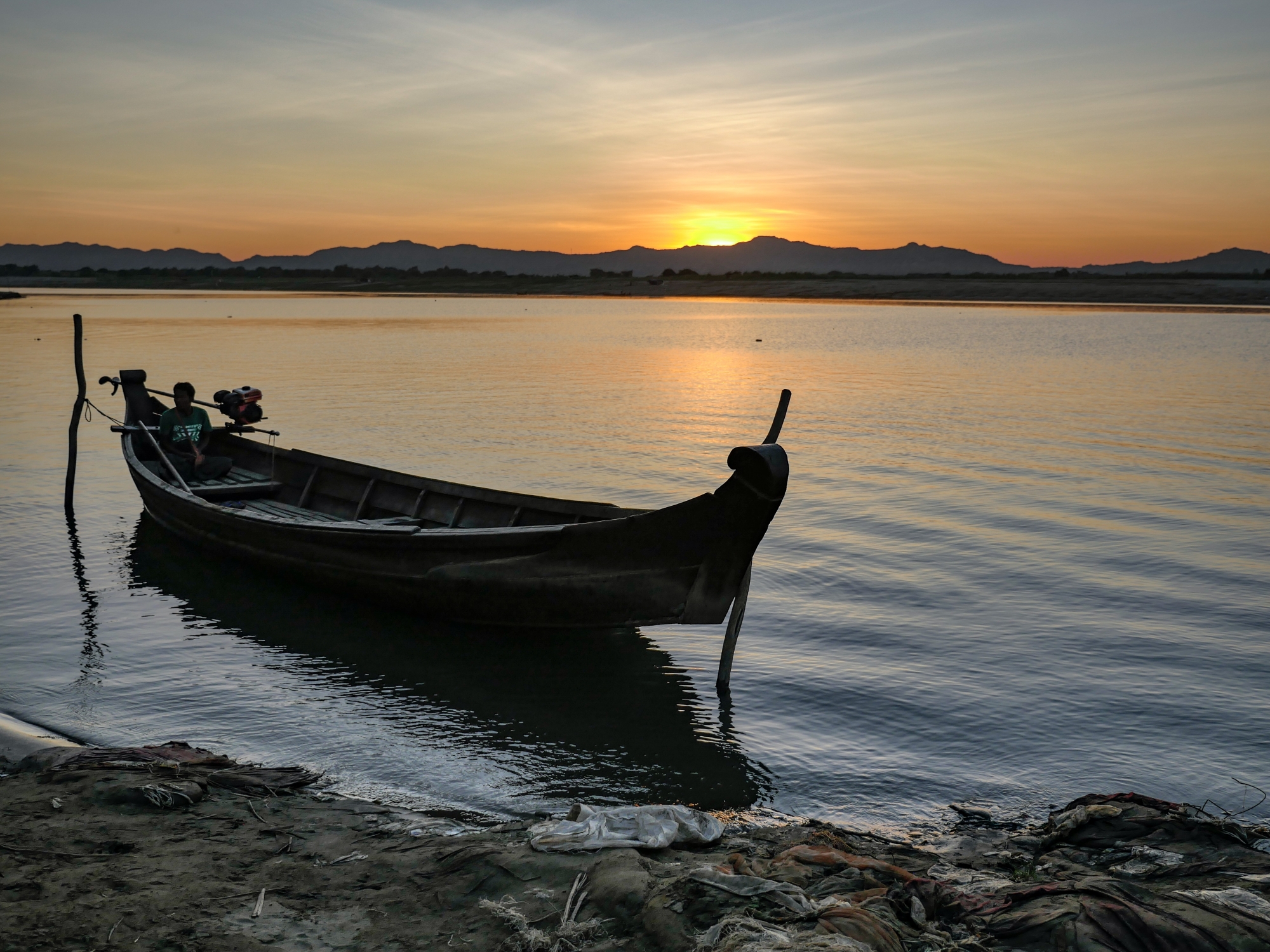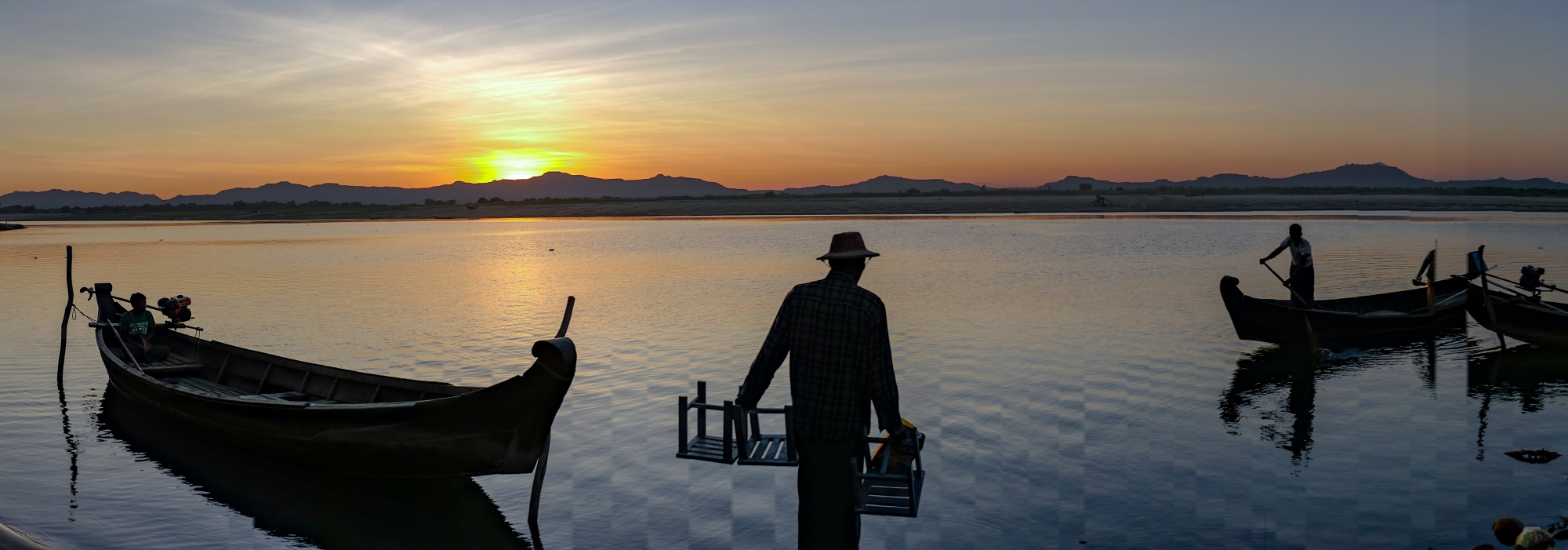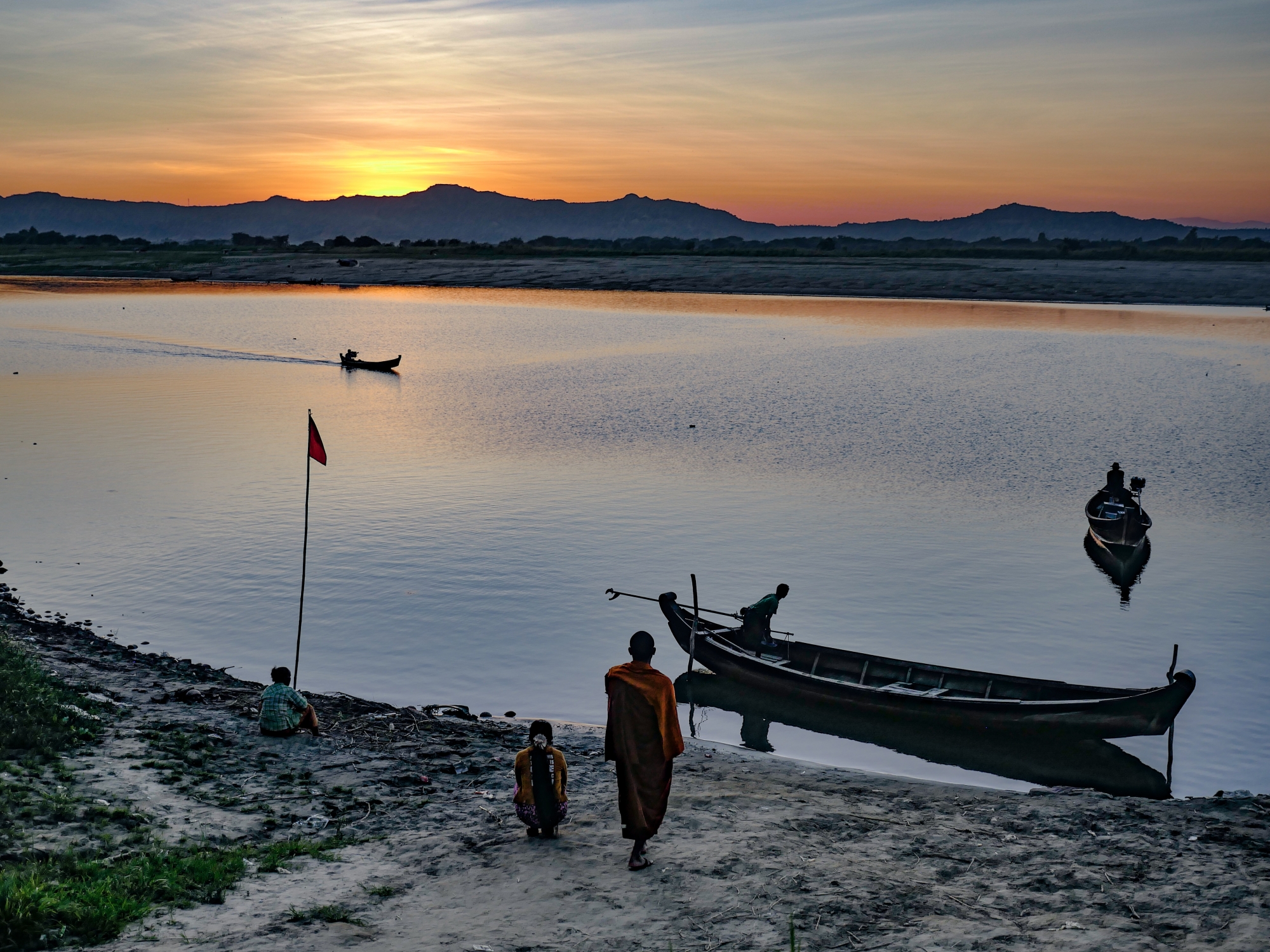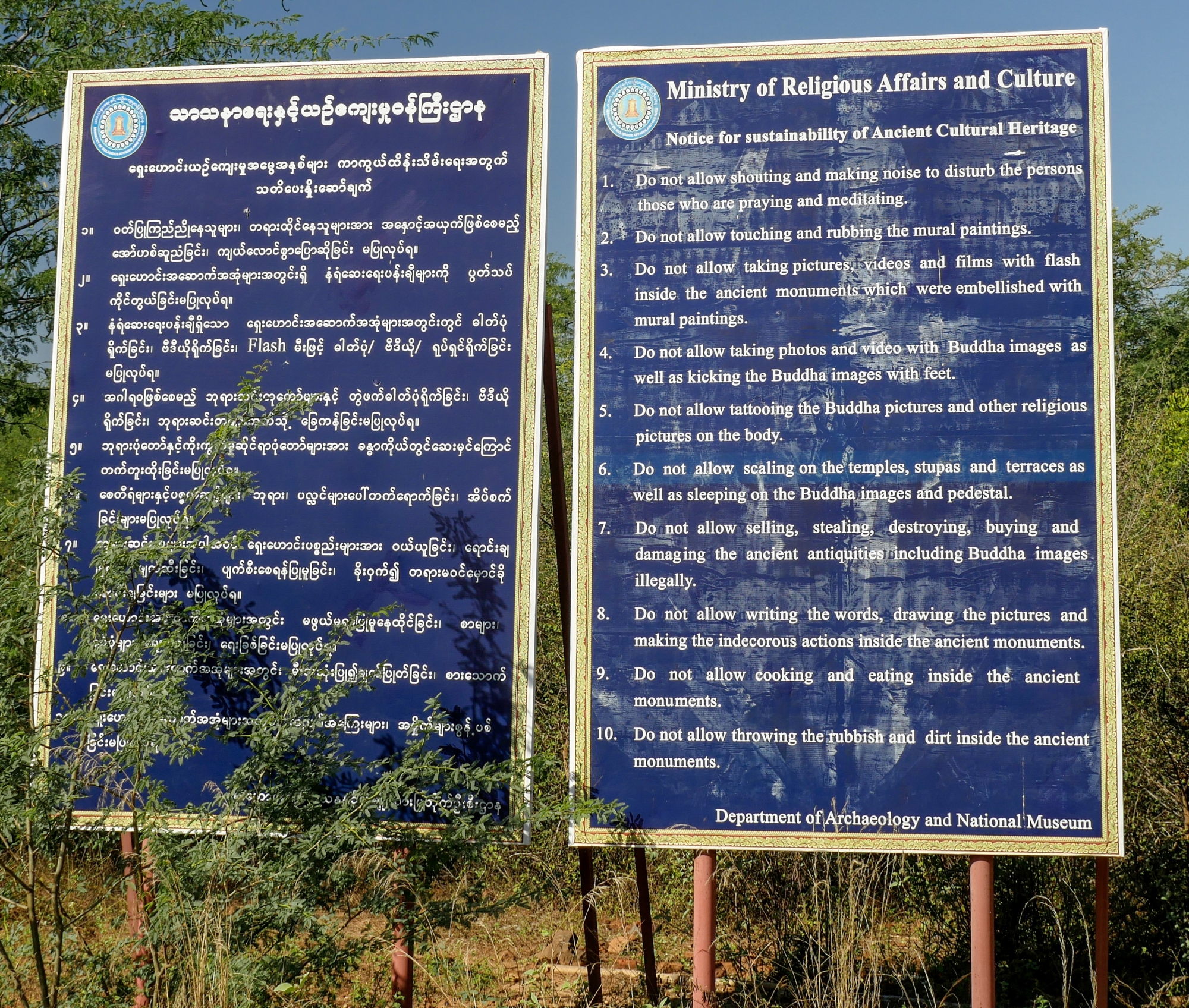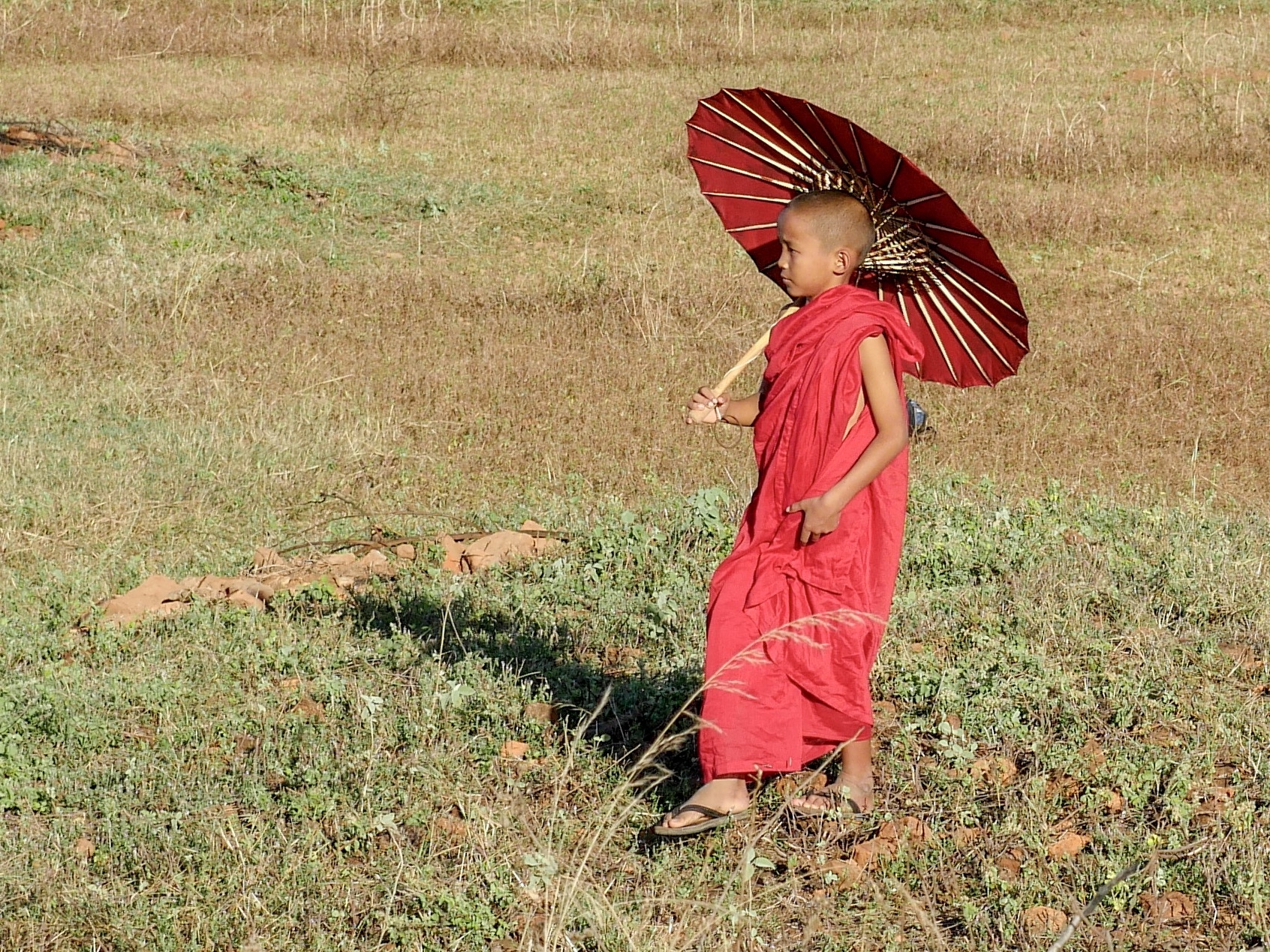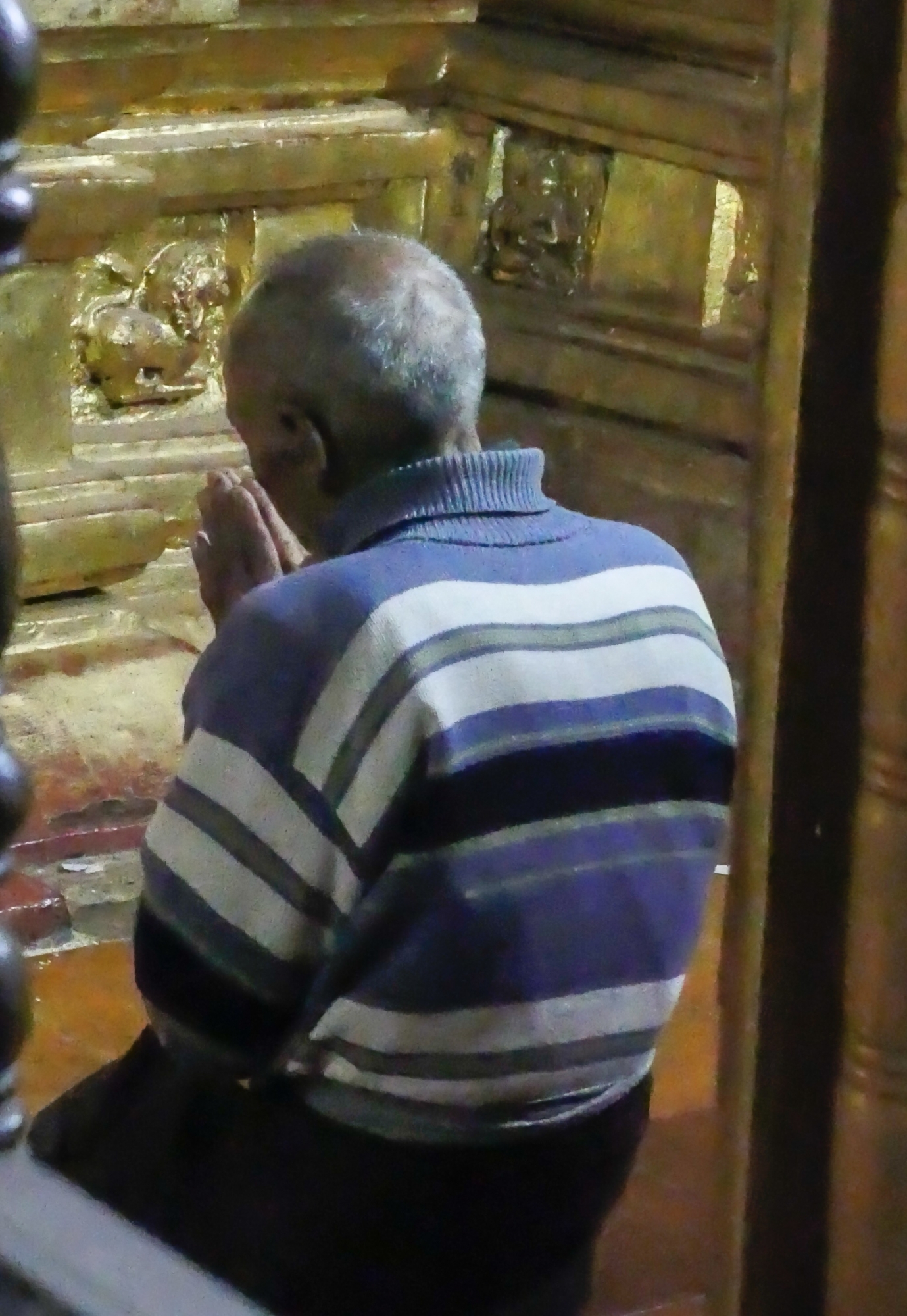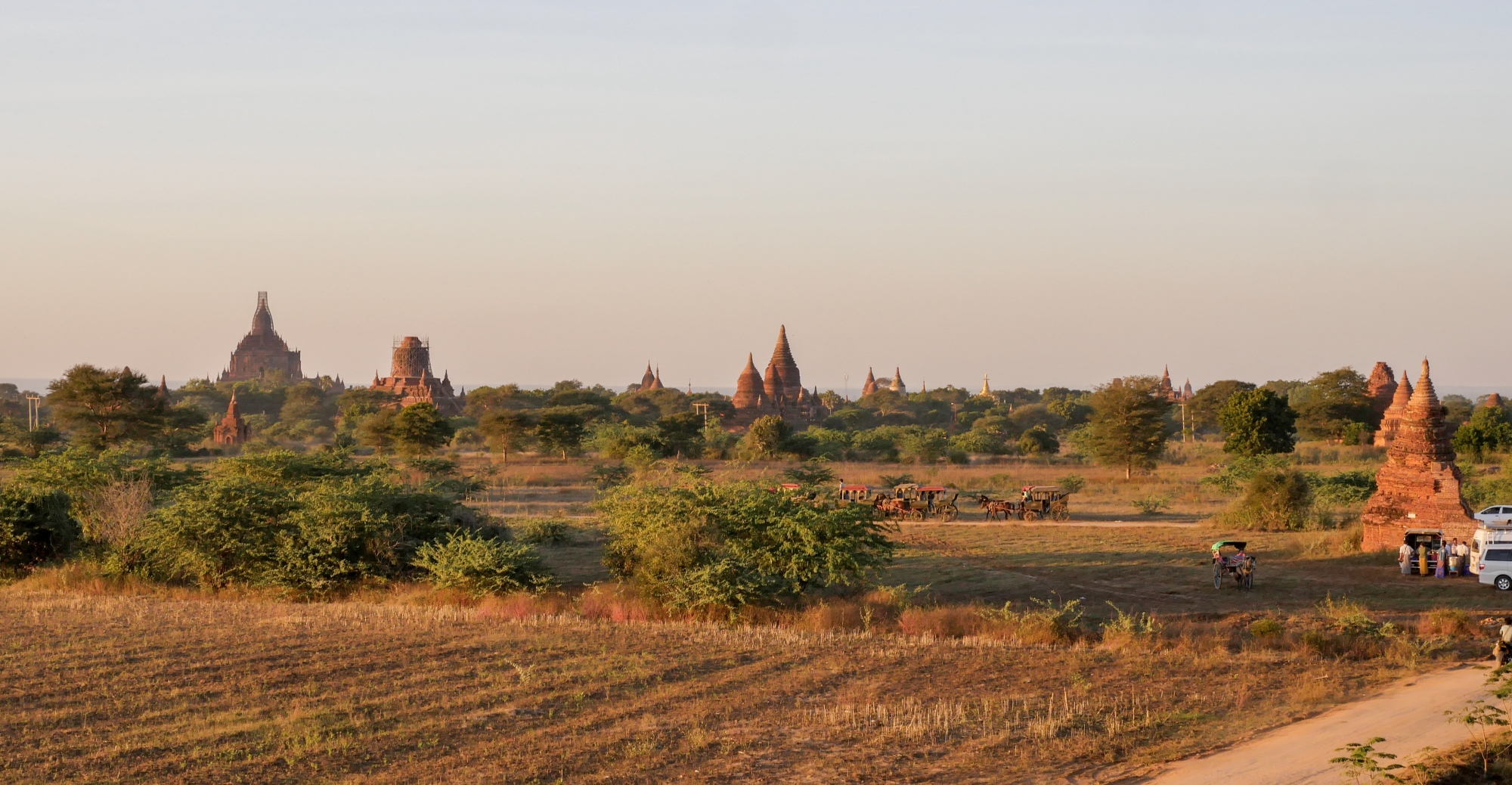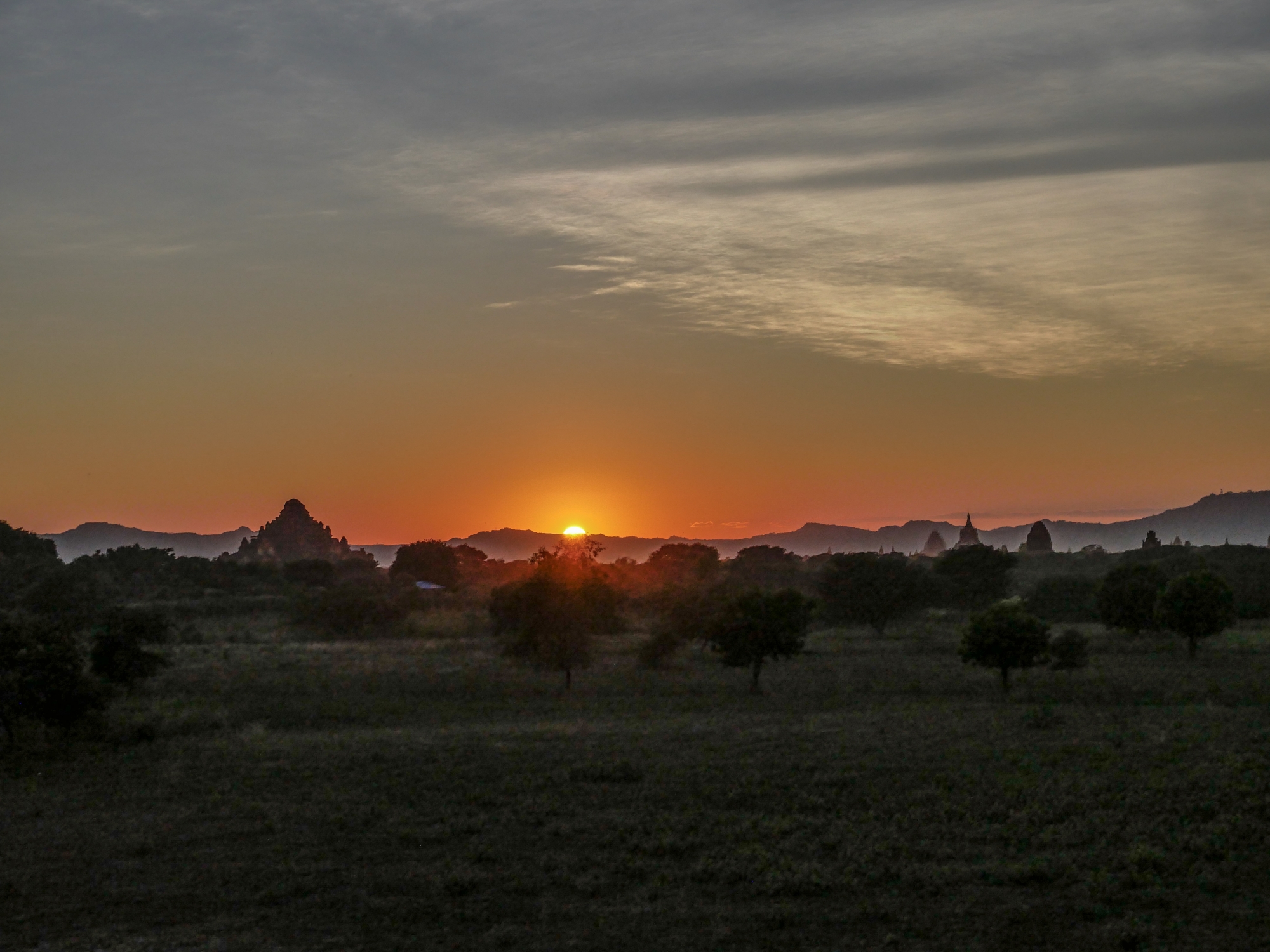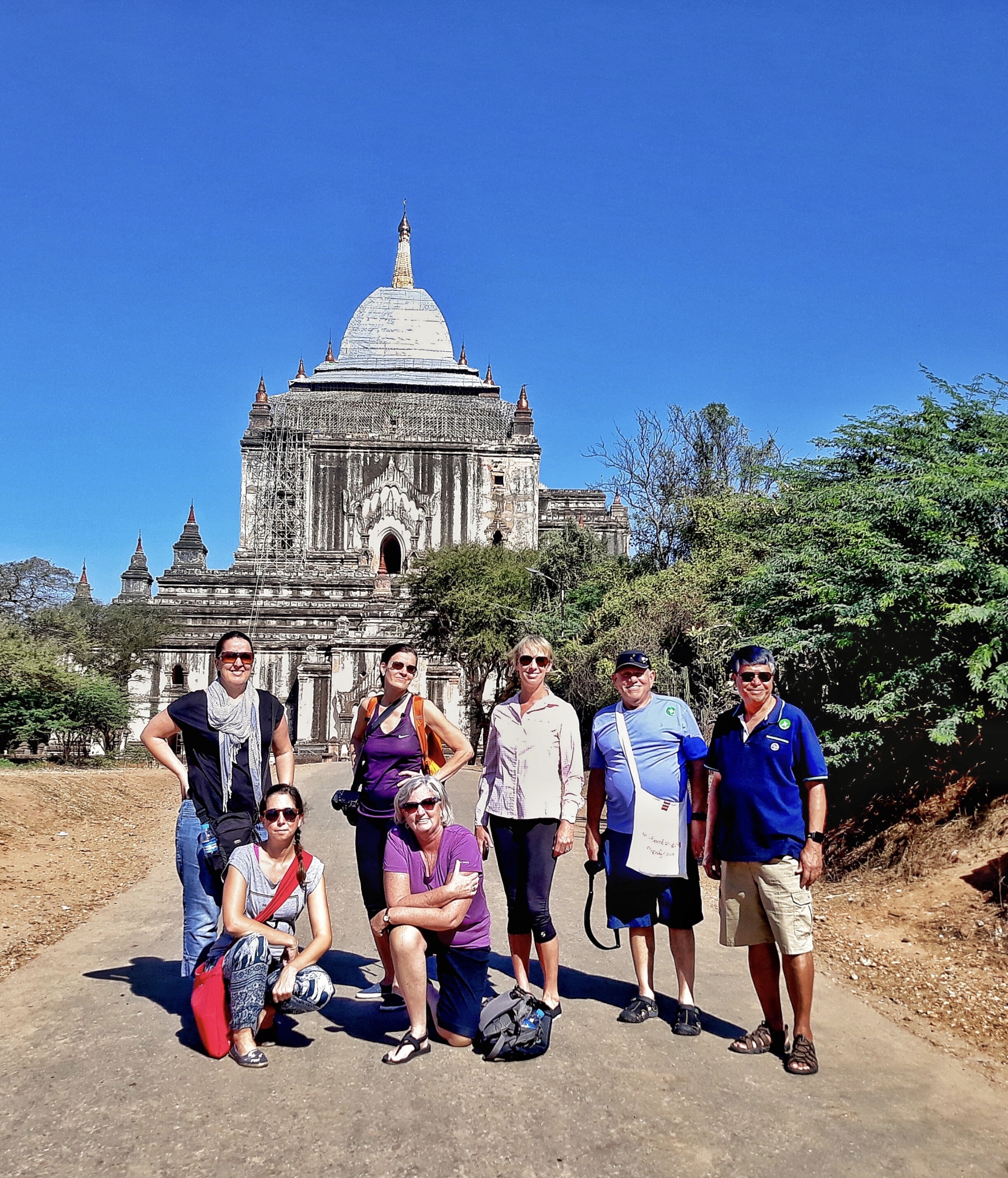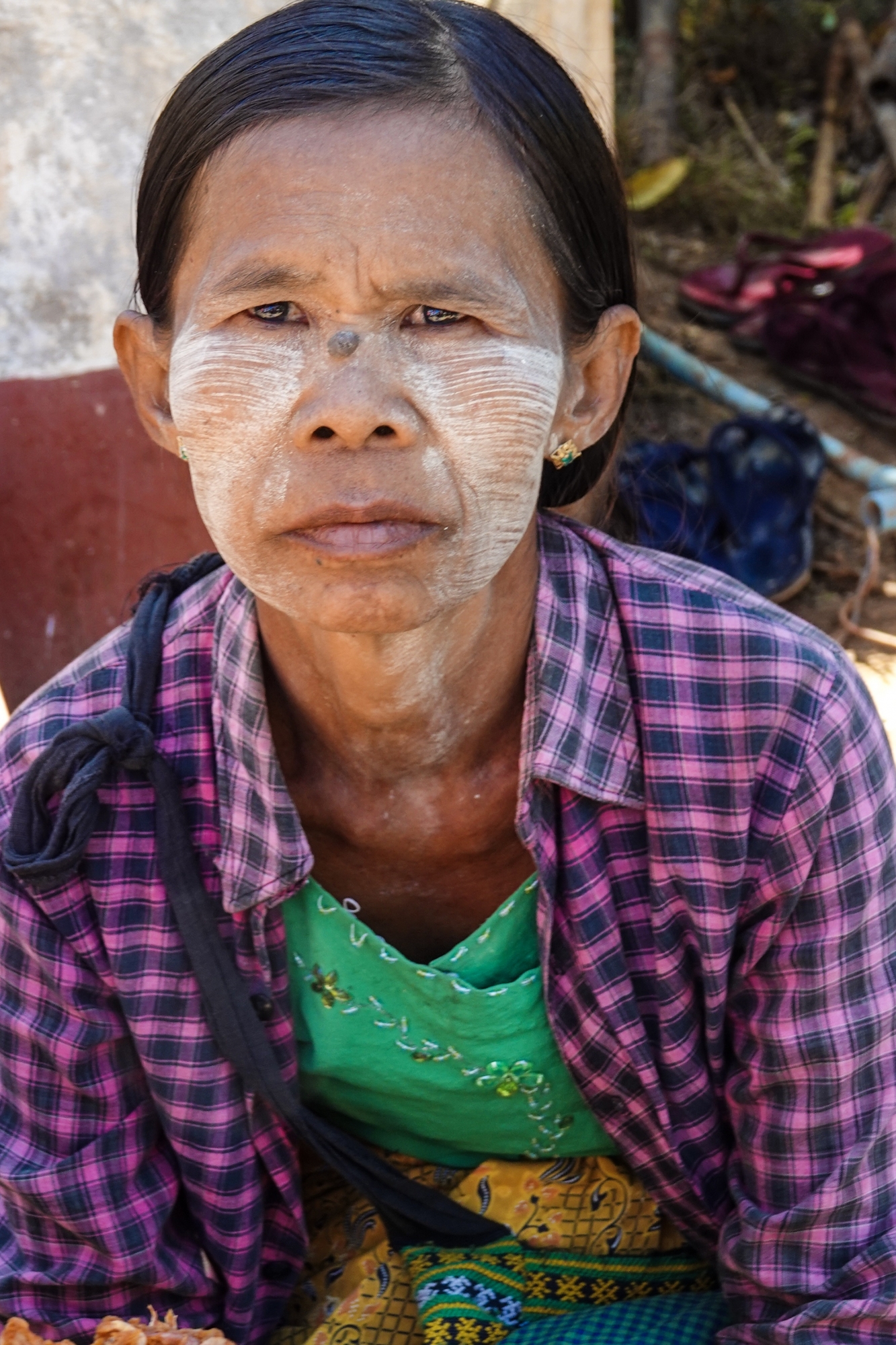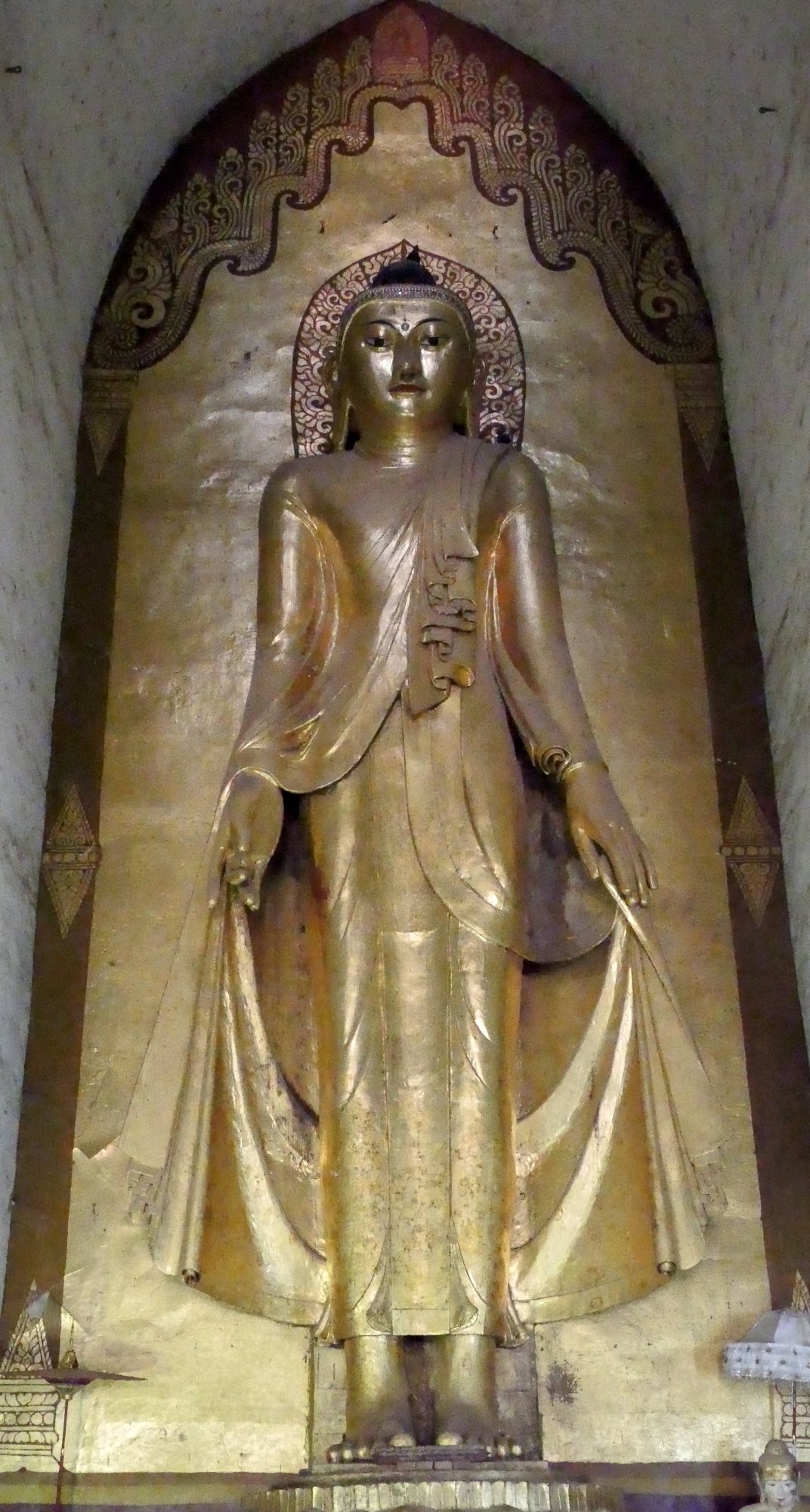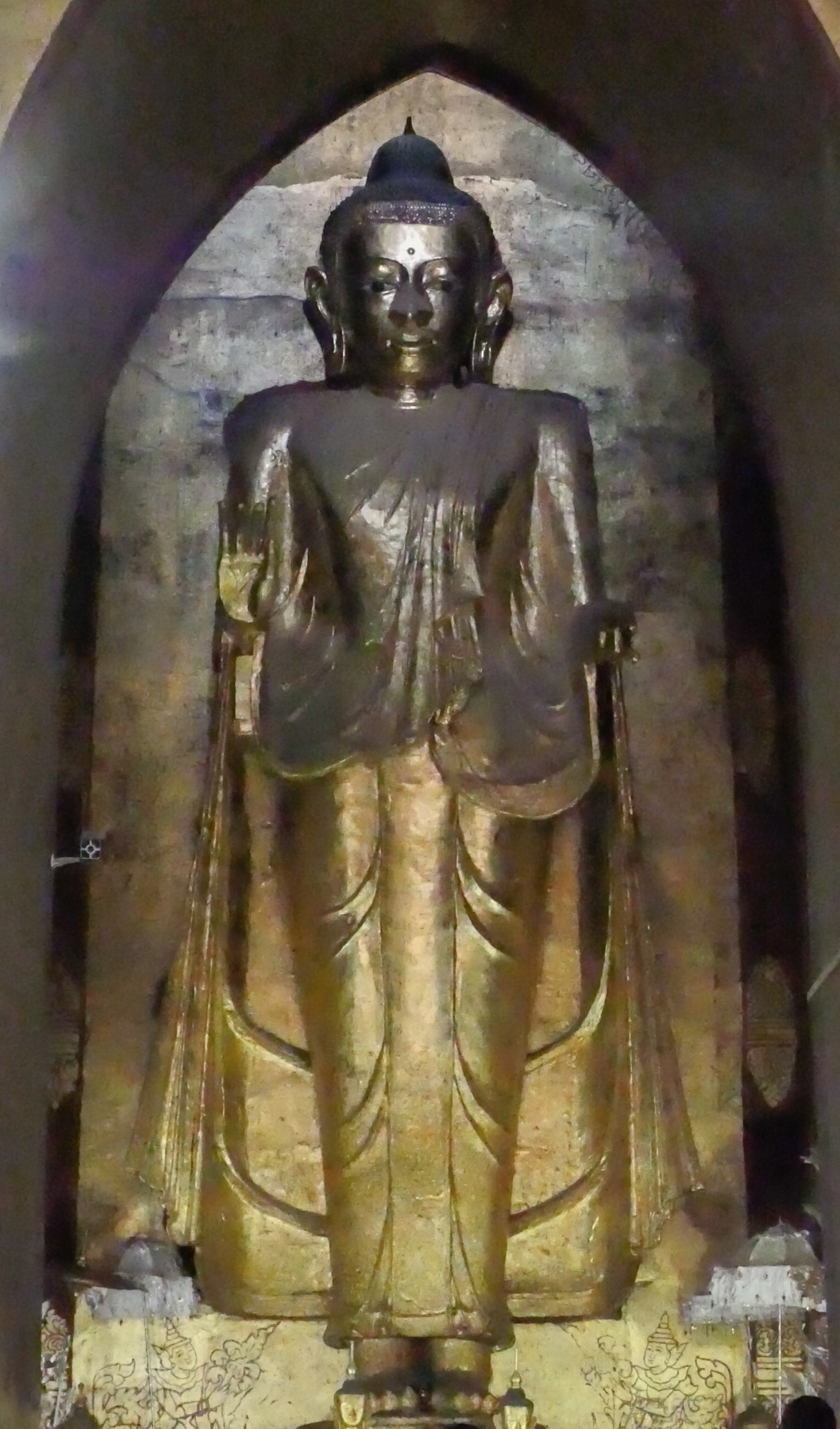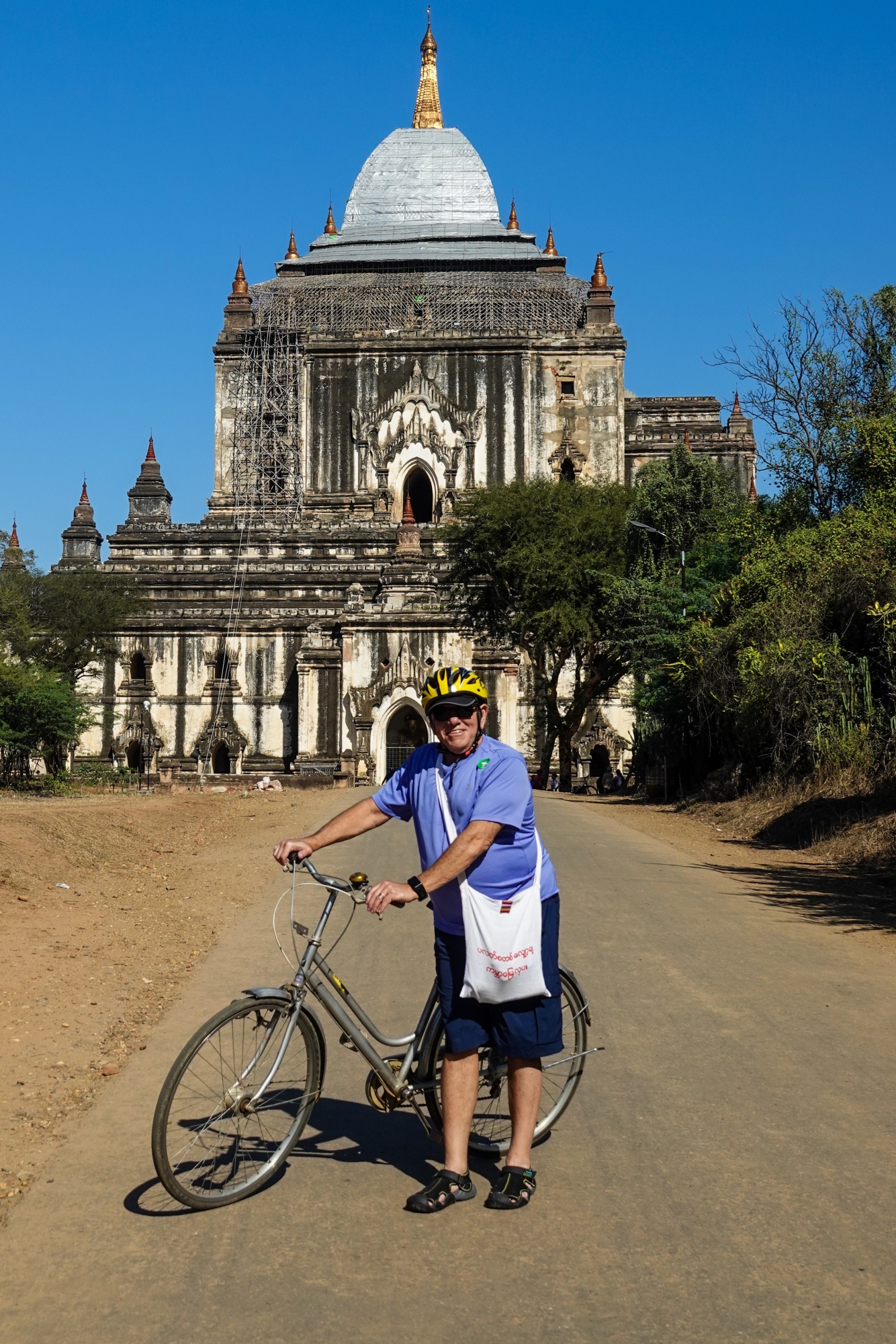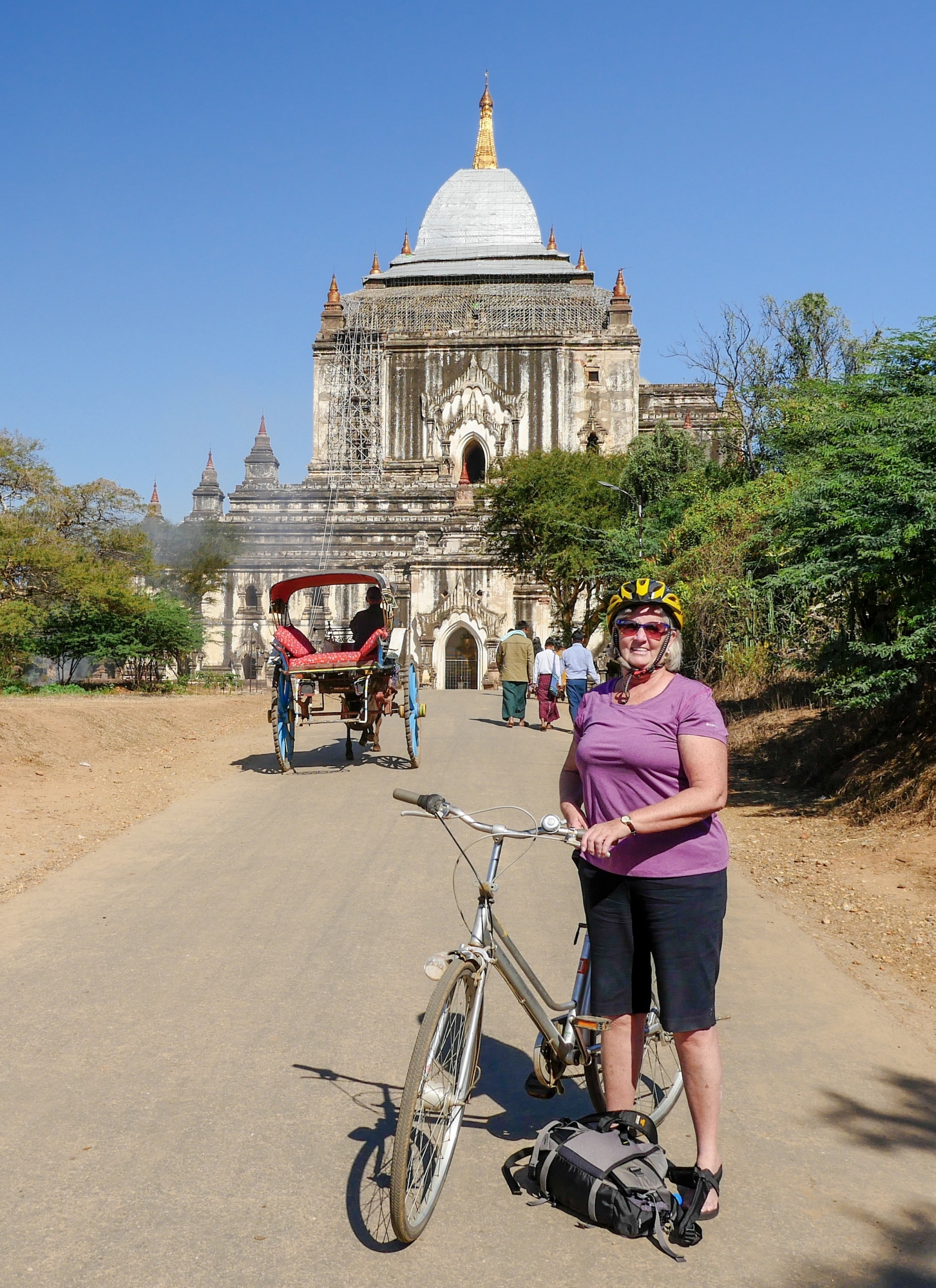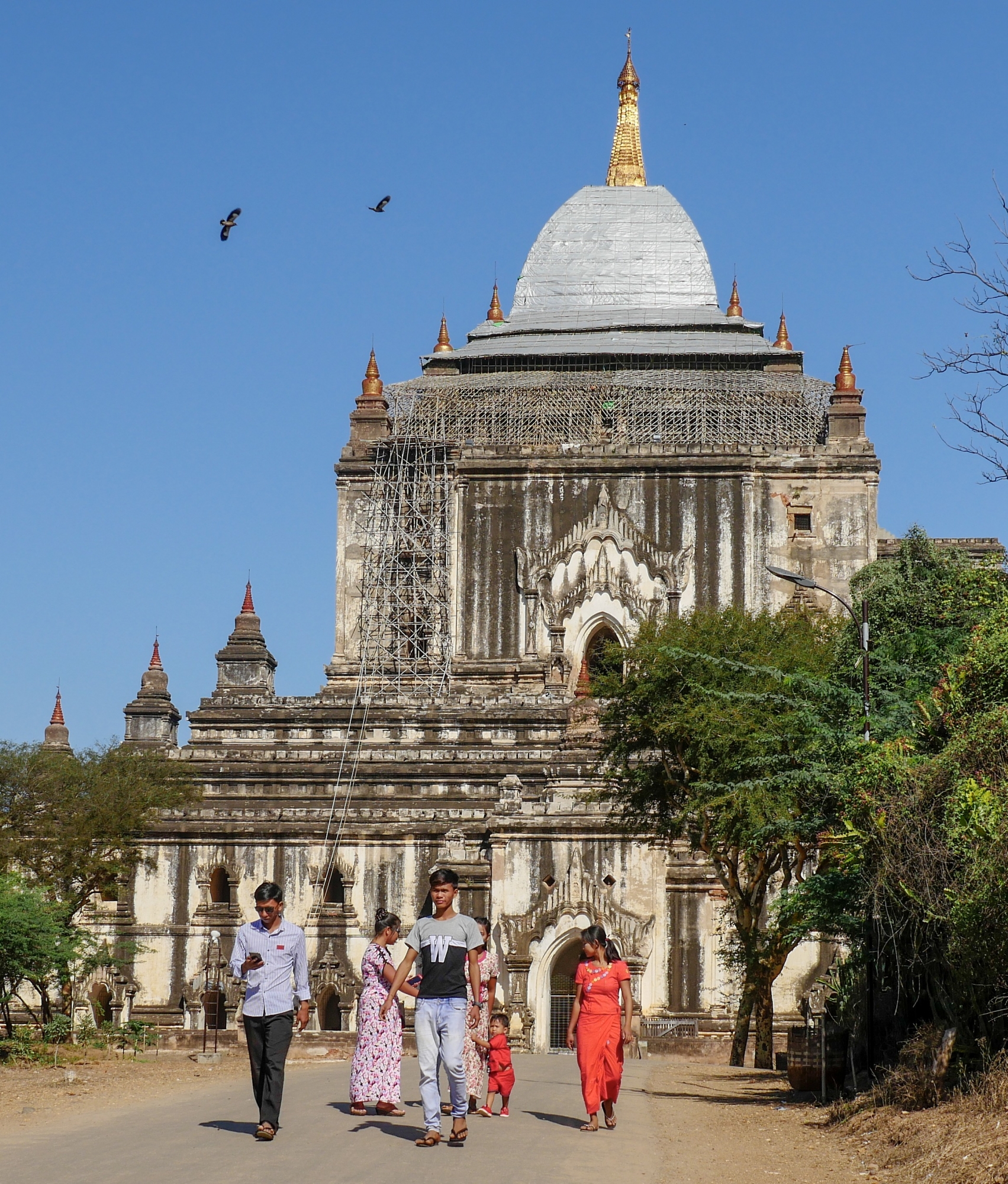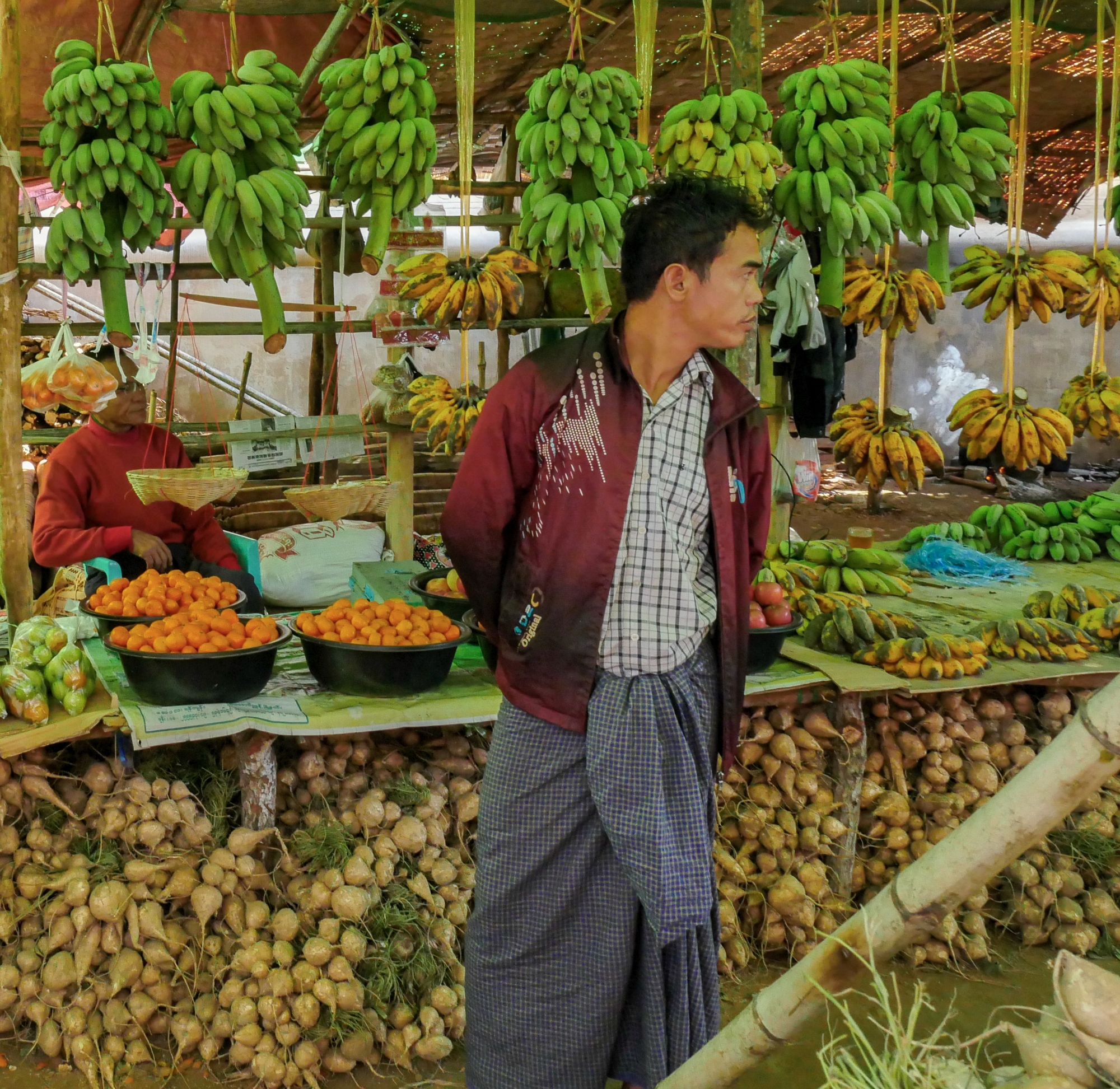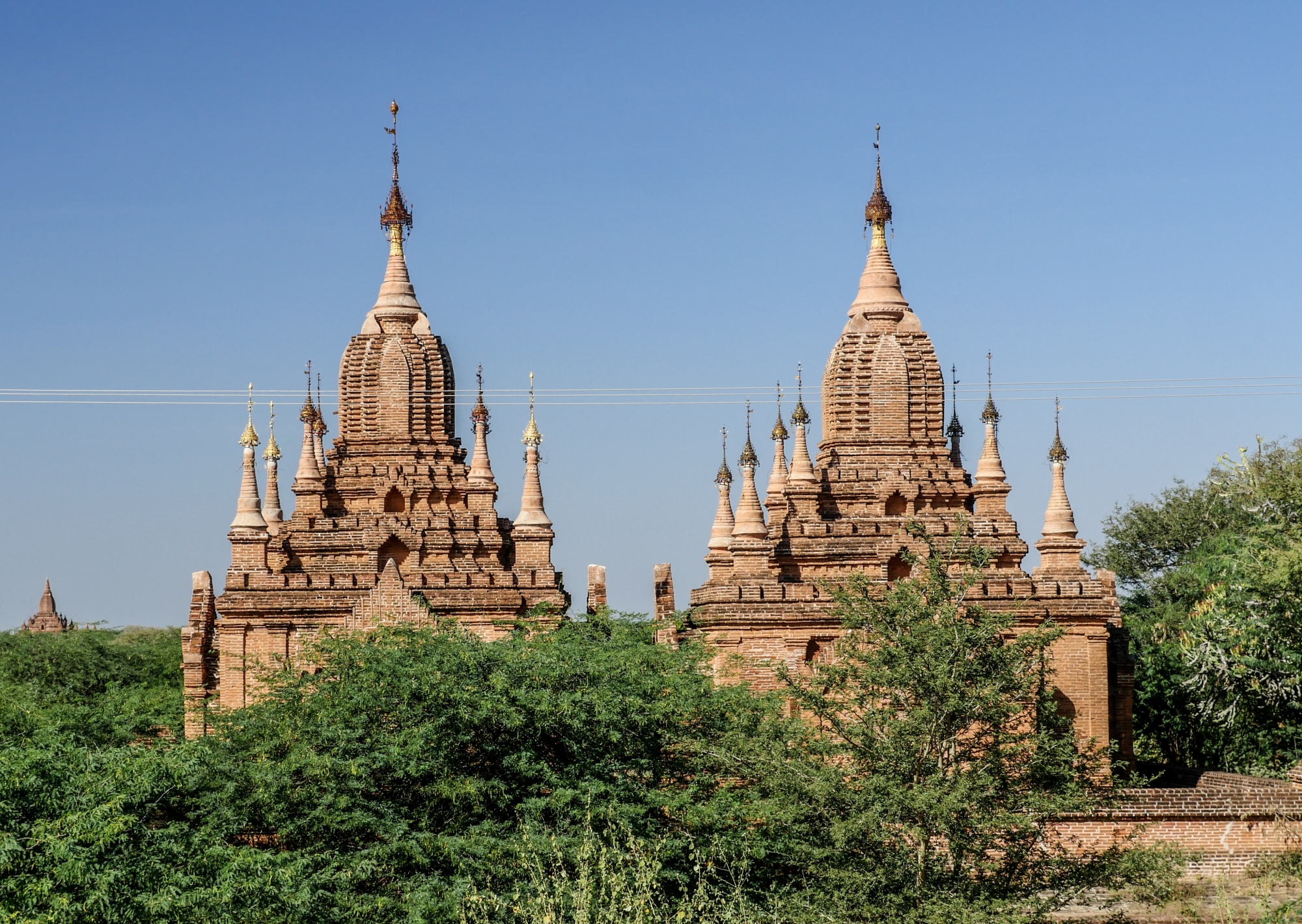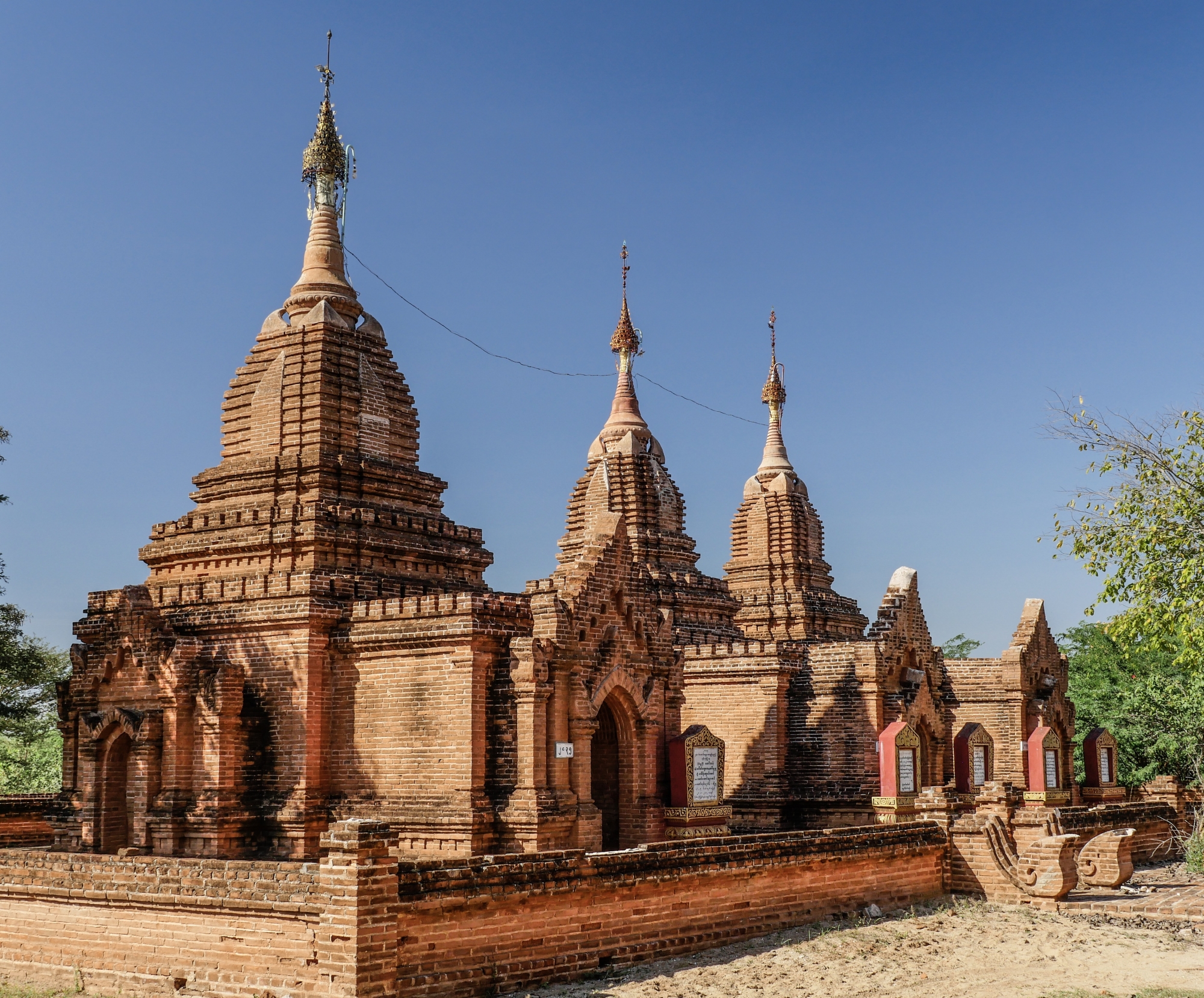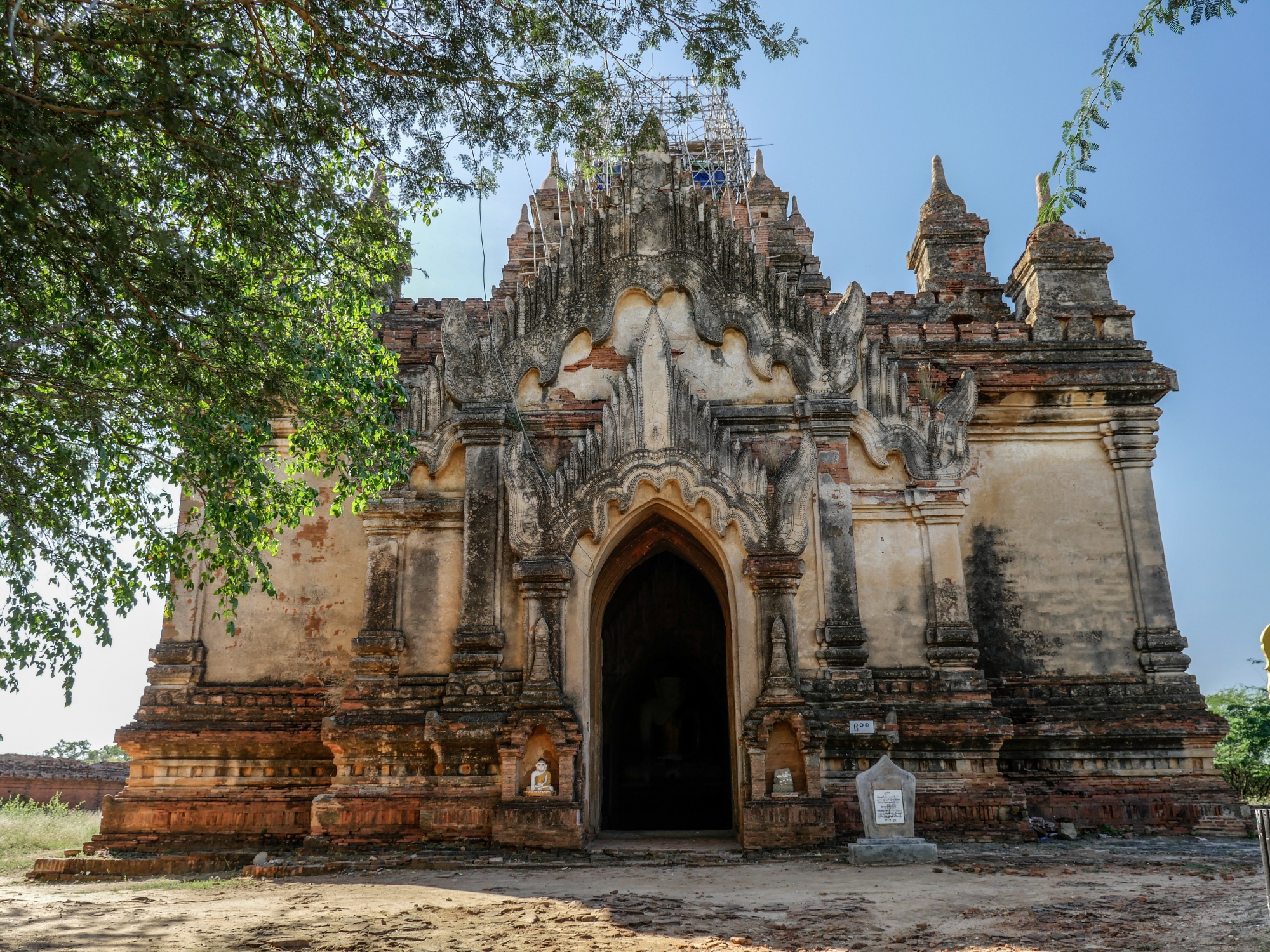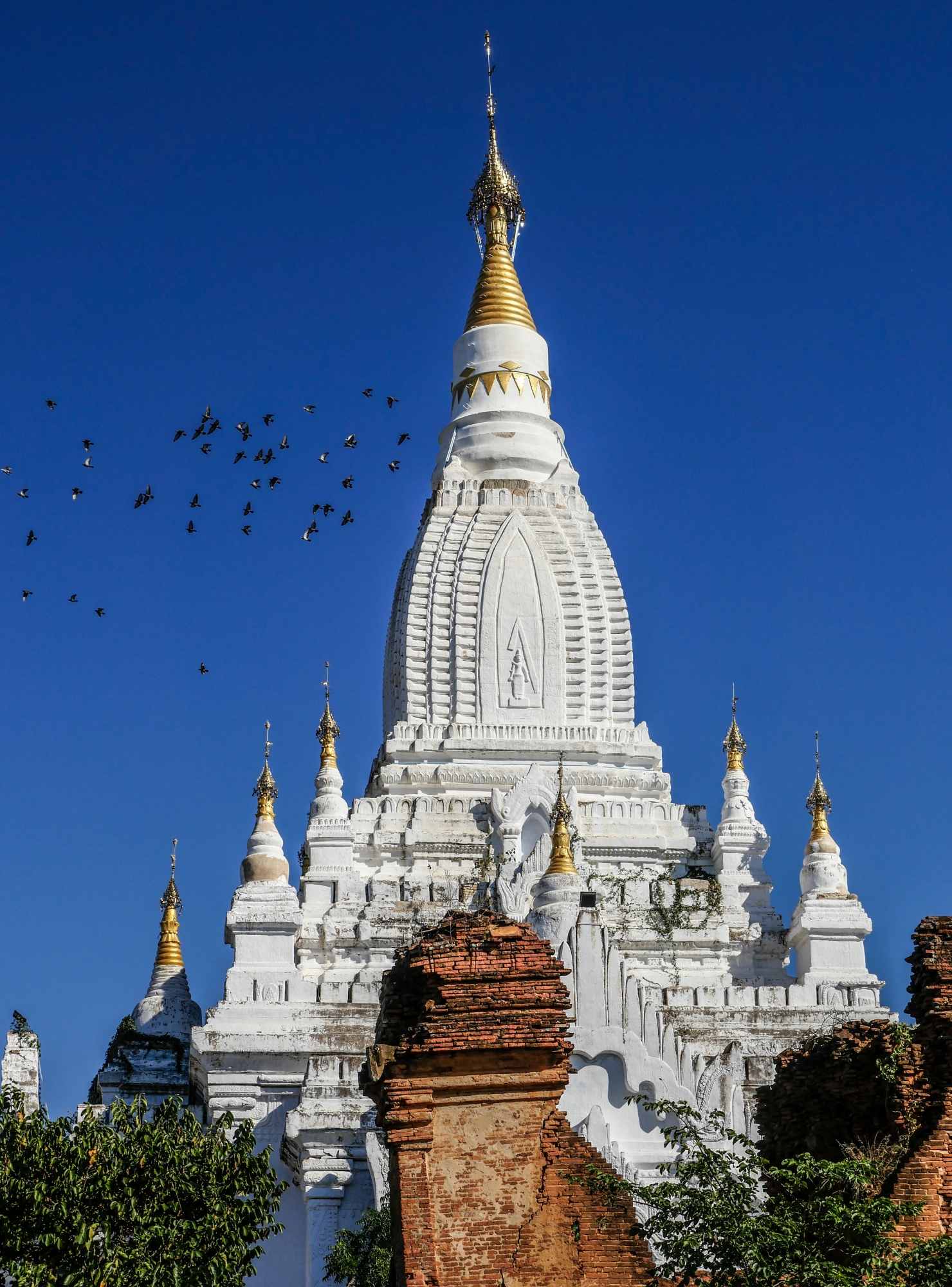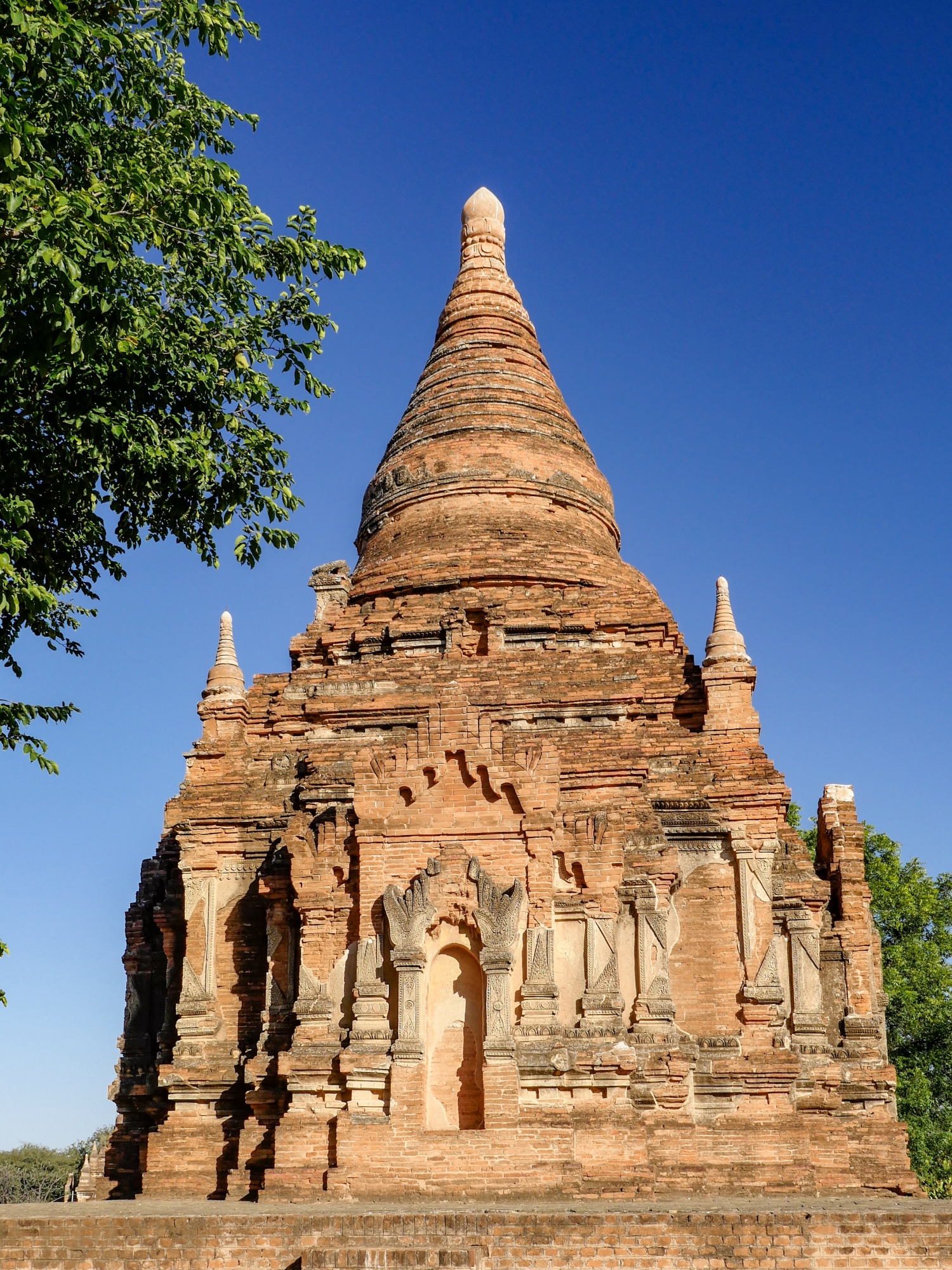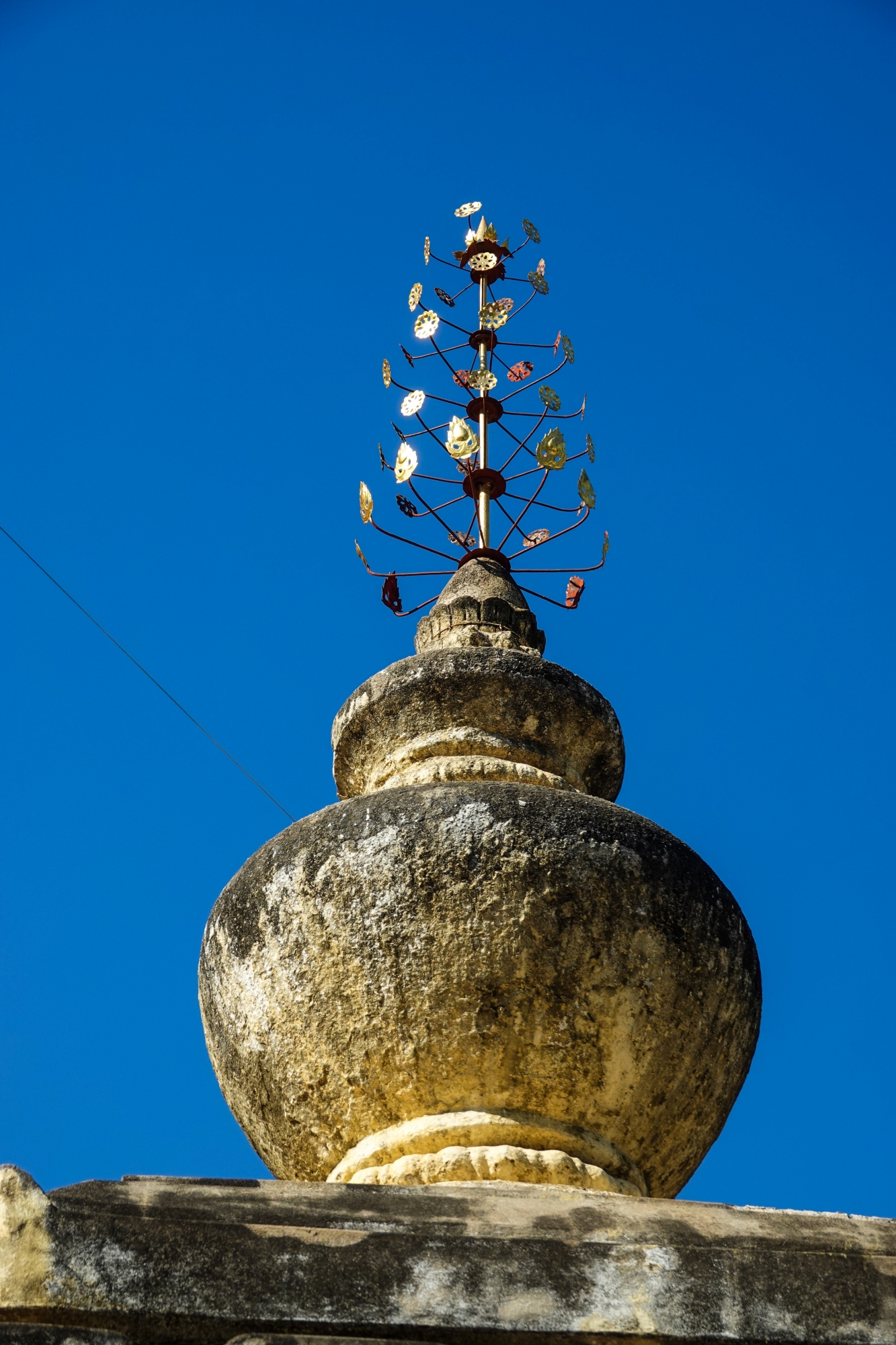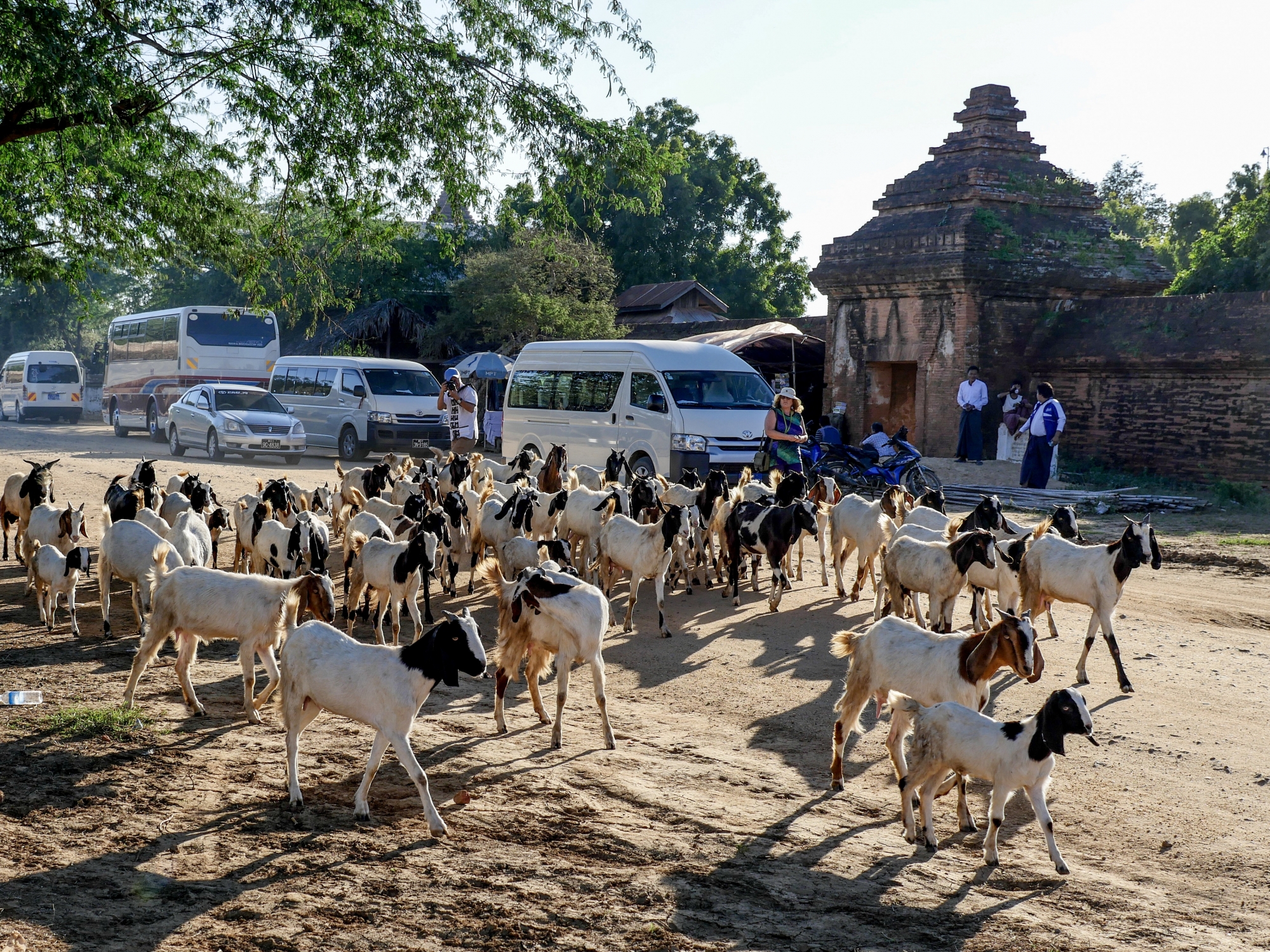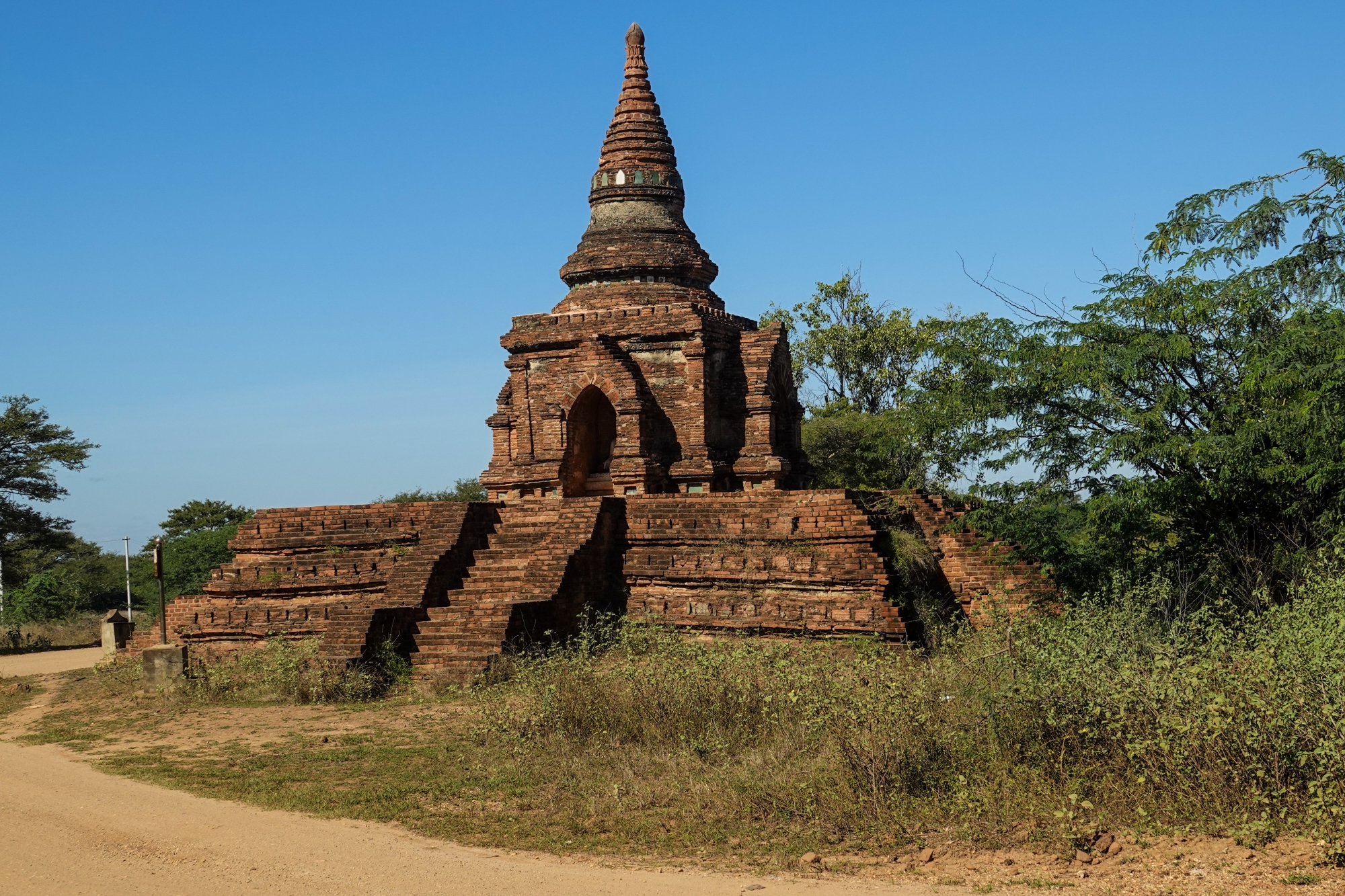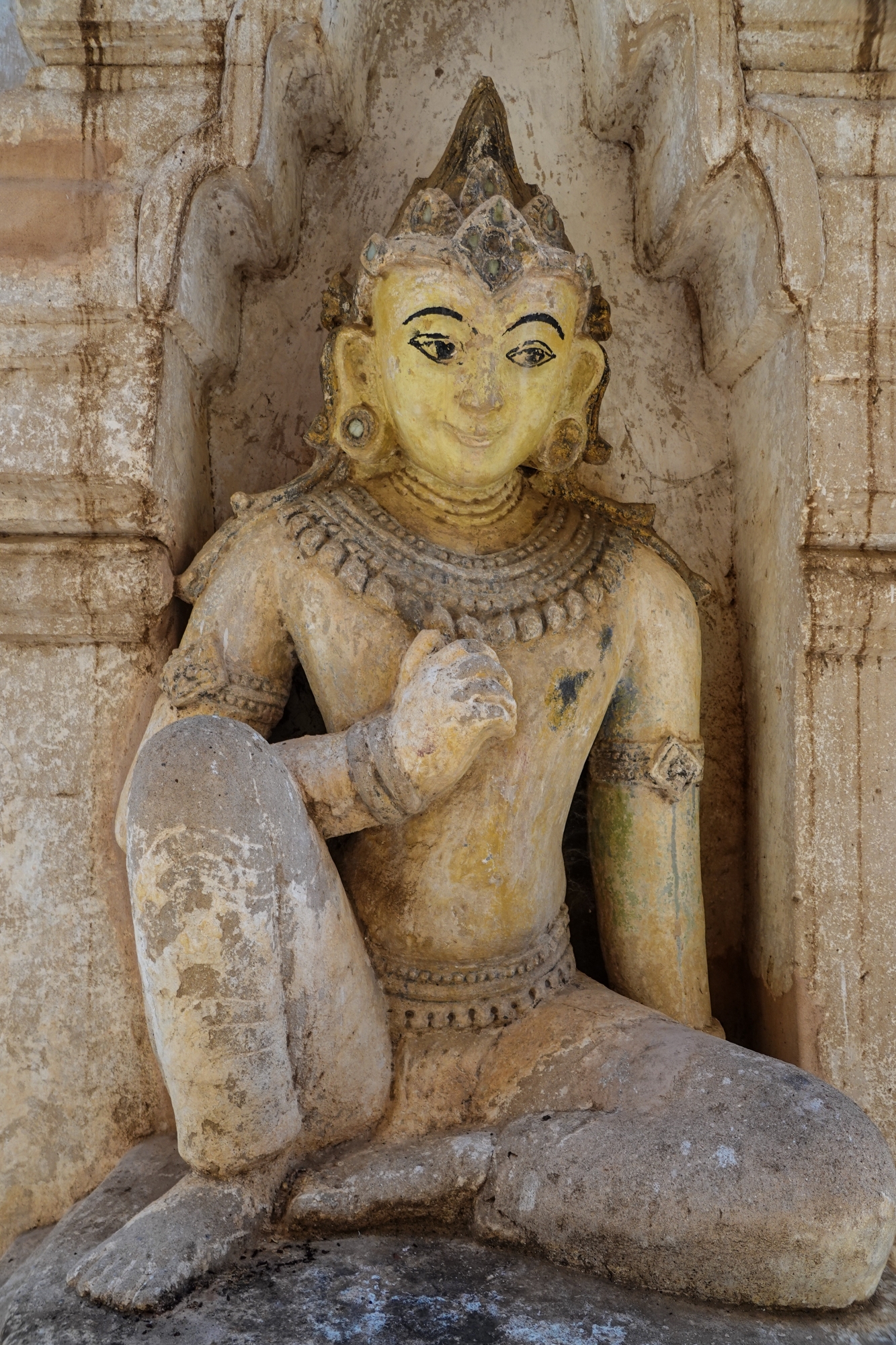Pagodas of Pagan – Established on the eastern bank of the Irrawaddy River, Pagan was a great capital and wealthy trading port while Europe was still in the Dark Ages. It was already a sizable metropolis in the 9th century, when it was inhabited by tribes who had migrated to the area in preceding centuries. In A.D. 1057, King Anawrahta defeated the Mon Kingdom to the south, creating an empire that was nearly the shape and size of present-day Myanmar.
Not long after defeating the Mon and unifying Burma’s ethnic groups in the 11th century, King Anawrahta converted to Theravada Buddhism (based on Karma) and embarked on a merit-earning, temple-building frenzy that was carried on by his son and their successors. Many Buddhists believe that those who contribute to the construction of a temple are rewarded with “merit” that improves their fate when they are reincarnated. Most of the temples that stand in Pagan today were built in the 12th century at a rate of one or two a month, along with libraries, monasteries and housing for pilgrims. When Burmese civilization was at its zenith the great Pagan area was home to a perhaps a half million people, including pagoda slaves, who maintained the temples and their artwork.
The Mongol army of Kublai Khan, attacked in 1287, defeated the Burmese. The king was forced to flee and a new capital in Yangon was established. However, Kublai Khan respected Buddhism and he ordered his troops not to destroy or loot the temples or their religious objects, so many still stand today. Estimates are more than 10,000 pagodas were built, only 2,200 remain standing today.
Pagan’s monuments are made mostly from fired red bricks, often with little or no mortar. Some are heaps of rubble. Some are crumbling but intact ruins. Others are working temples with monks and worshipers. Many remain in good condition because they are still regarded as sacred by pilgrims, who continue to visit Pagan and take care of its religious buildings long after the city outlived its usefulness as a political or economic center. Pagan is filled with pagodas because each wealthy family had to outdo the other in their devotion.
There are three kinds of religious monuments at Pagan: stupas and temples (known collectively as pagodas) and monasteries. Stupas are generally solid, bell-shaped structures that contain holy relics such as hairs or teeth from Buddha or a sacred Buddhist scriptures. Some have objects related to famous monks. Temples are places of worship. They generally contain images of Buddha and are places where Buddhists practice devotional activities. Monasteries contains living quarters and meditation cells for monks.
The ancient bricks and mortar were more durable than those used now. Even today, the old bricks are stronger than the new ones. Bang one of each kind together and it’s the new one that breaks. The original bricks were made with clay and rice husks and, according to legend, kneaded by elephants. The mortar was made of molasses, buffalo leather, cotton and fermented peanut oil, archeologists say. The old mortar was put on as thin as superglue; the modern cement is laid on thick.
Burma’s (Myanmar since 1989) isolation, since independence from Britain in 1948, has prevented independent archeologists from working at Pagan (changed to Bagan after independence). Most government funds allocated for work at Bagan has been earmarked for restoring monuments destroyed by a huge earthquake in 1975. The bamboo covering indicates restoration is occurring. Many of these damaged pagodas underwent restorations in the 1990s by the military government, which sought to make Bagan an international tourist destination. However, the restoration efforts instead drew widespread condemnation from art historians and preservationists worldwide. Critics are aghast that the restorations paid little attention to original architectural styles, and used modern materials, and that the government has also established a golf course, a paved highway, and built a 200-foot watchtower. Although the government believed that the ancient capital’s hundreds of (unrestored) temples and large corpus of stone inscriptions were more than sufficient to win the designation of UNESCO World Heritage Site, the city has not been so designated, allegedly mainly on account of the restorations. In August 2016, a major earthquake again shook Bagan. Much of the repair accomplished in the 1990’s was destroyed and The Bagan Archaeological Department has started a survey and reconstruction effort with the help of UNESCO experts.
The tour group bicycled to and thru the pagodas, which are also used as central marketplaces. The people put Thanaka, a natural sunscreen made form the bark of a tree, which you will see all Burmese women – and some men – wearing on their faces. Our guide said, this is a sign of a “good girl” to wear this traditional cover. Of course, Karen had to try it as it became available at other locations. During free time, we went out to catch some pagodas with the evening light! Dave was brave enough to take a scooter on the dirt roads, Karen opted to walk around town. In this amazing place you can’t go anywhere without finding a sacred shrine.
Ananda Temple is the large white temple at the beginning of the post. It was built in the 11th century and is an active and bustling place. It contains 4 Buddhas, one to the NSEW which shows Buddha is everywhere. 10 centuries (1,000 years) this structure has been hosting visitors, how amazing is that!
The funniest group activity in Bagan was a traditional Burmese cooking class. This very organized lady had 10 cooking stations and kept the entire group, 7 distracted adults, chopping, stirring, browning and having a very good visit. At the end, we enjoyed perhaps the best meal of the trip, and she sent us the recipes.


